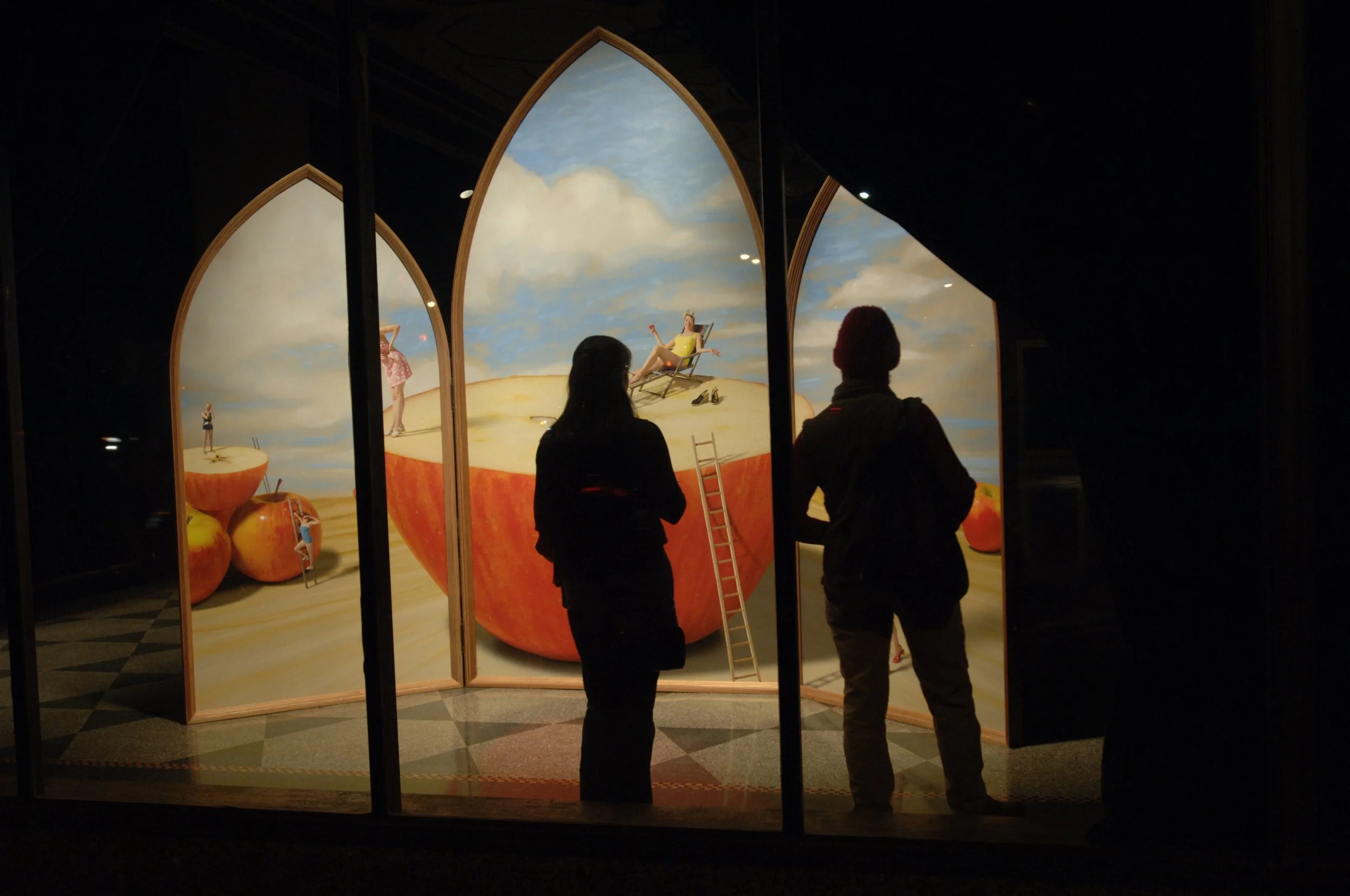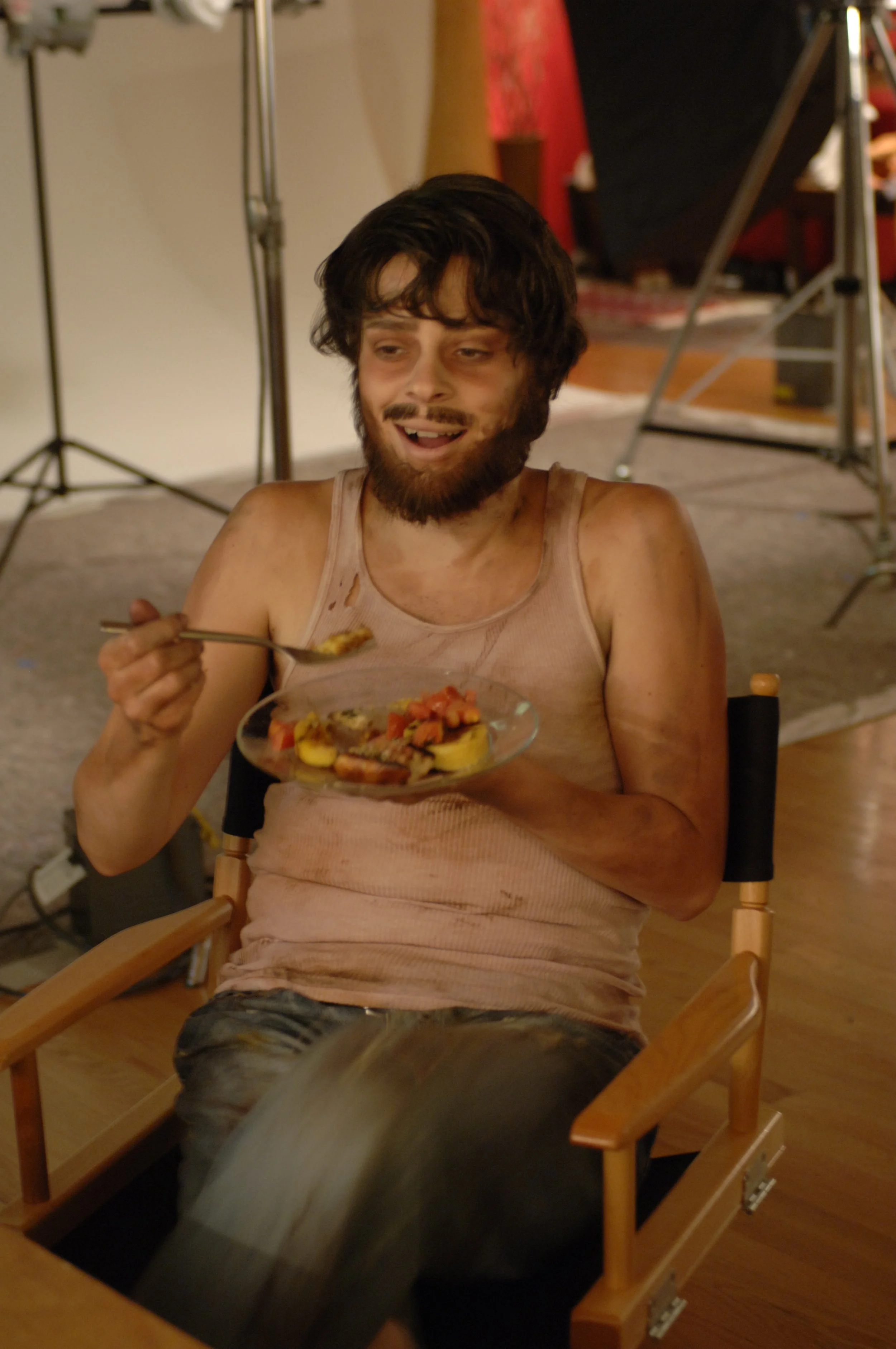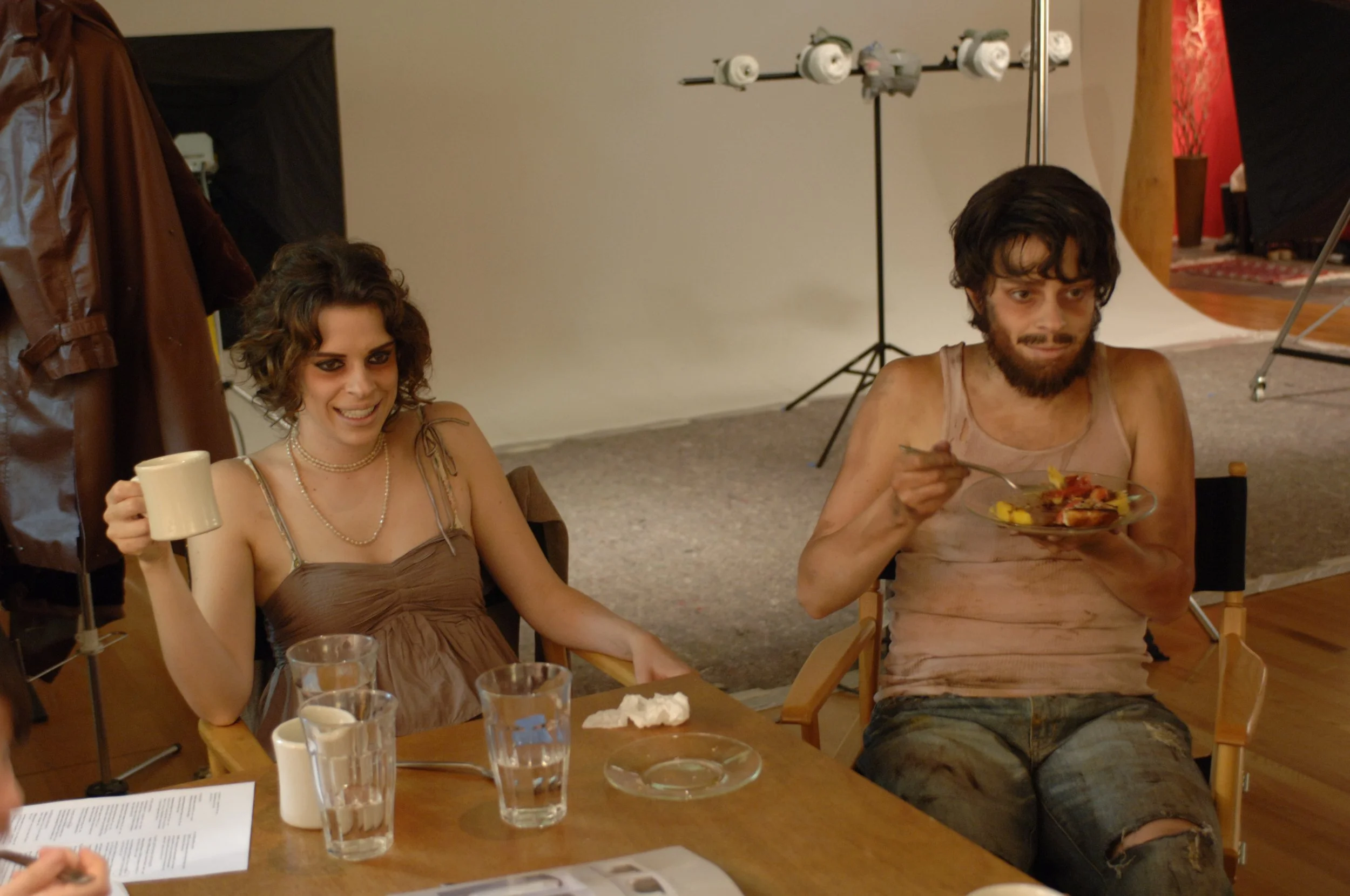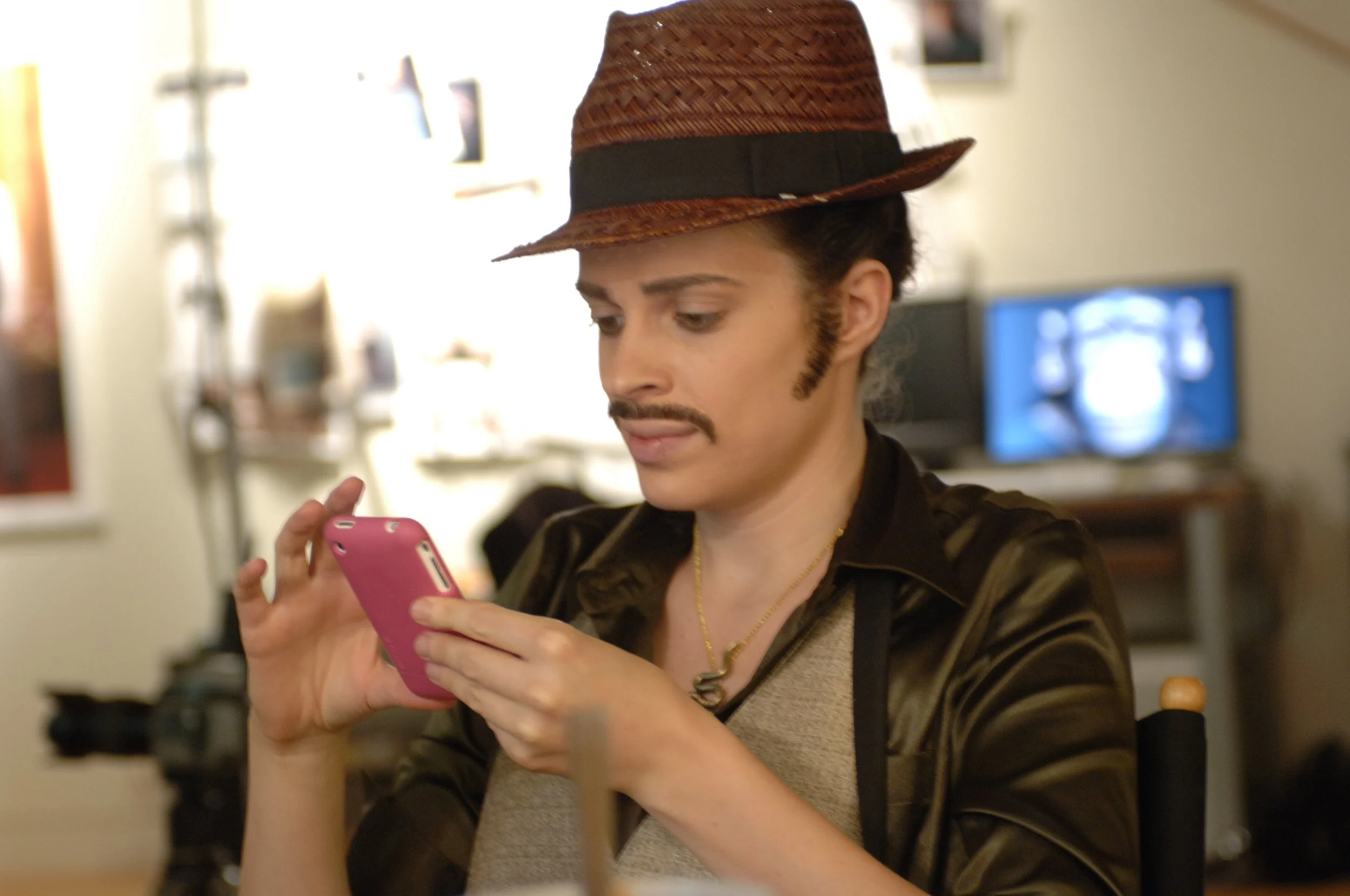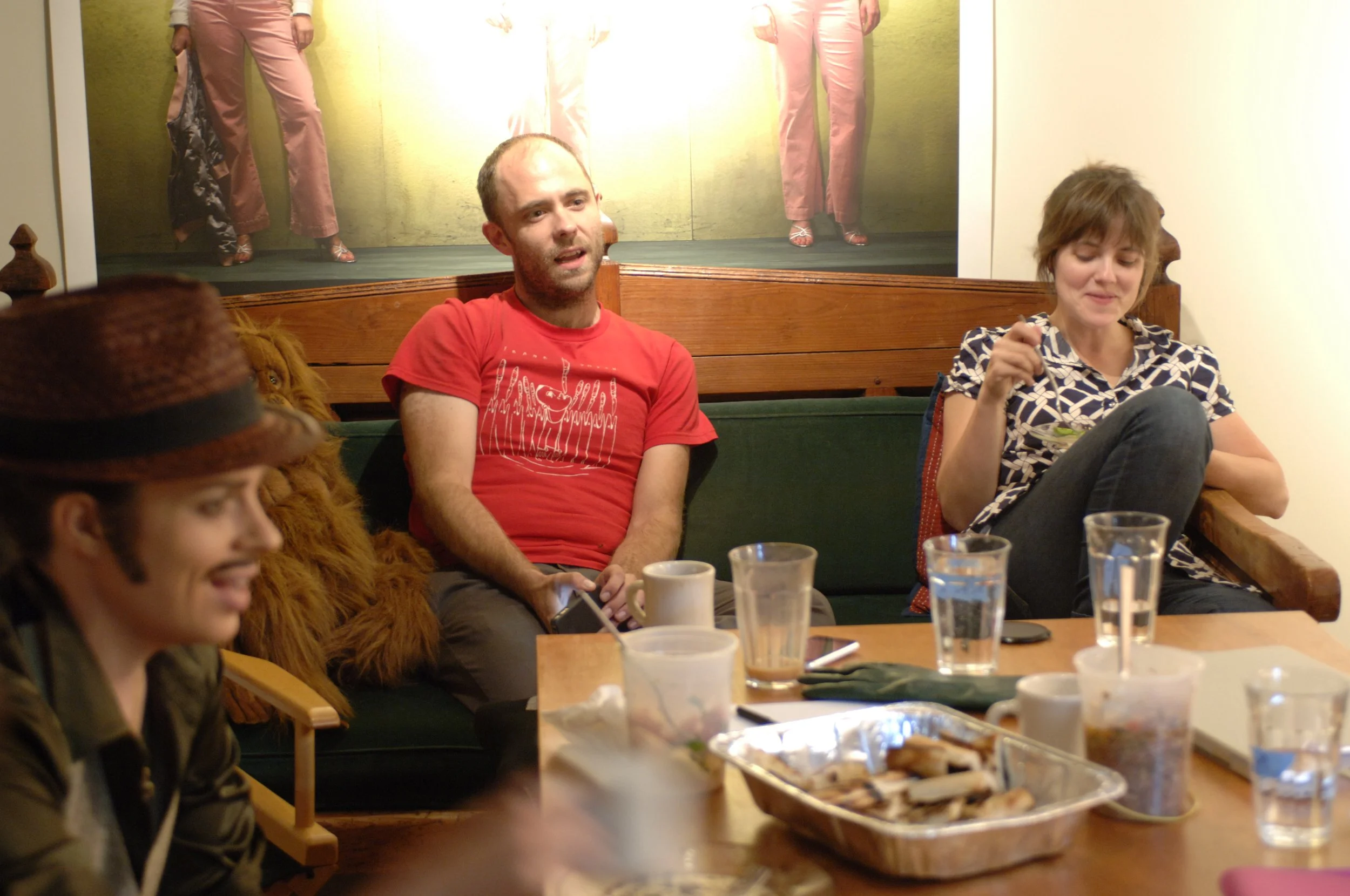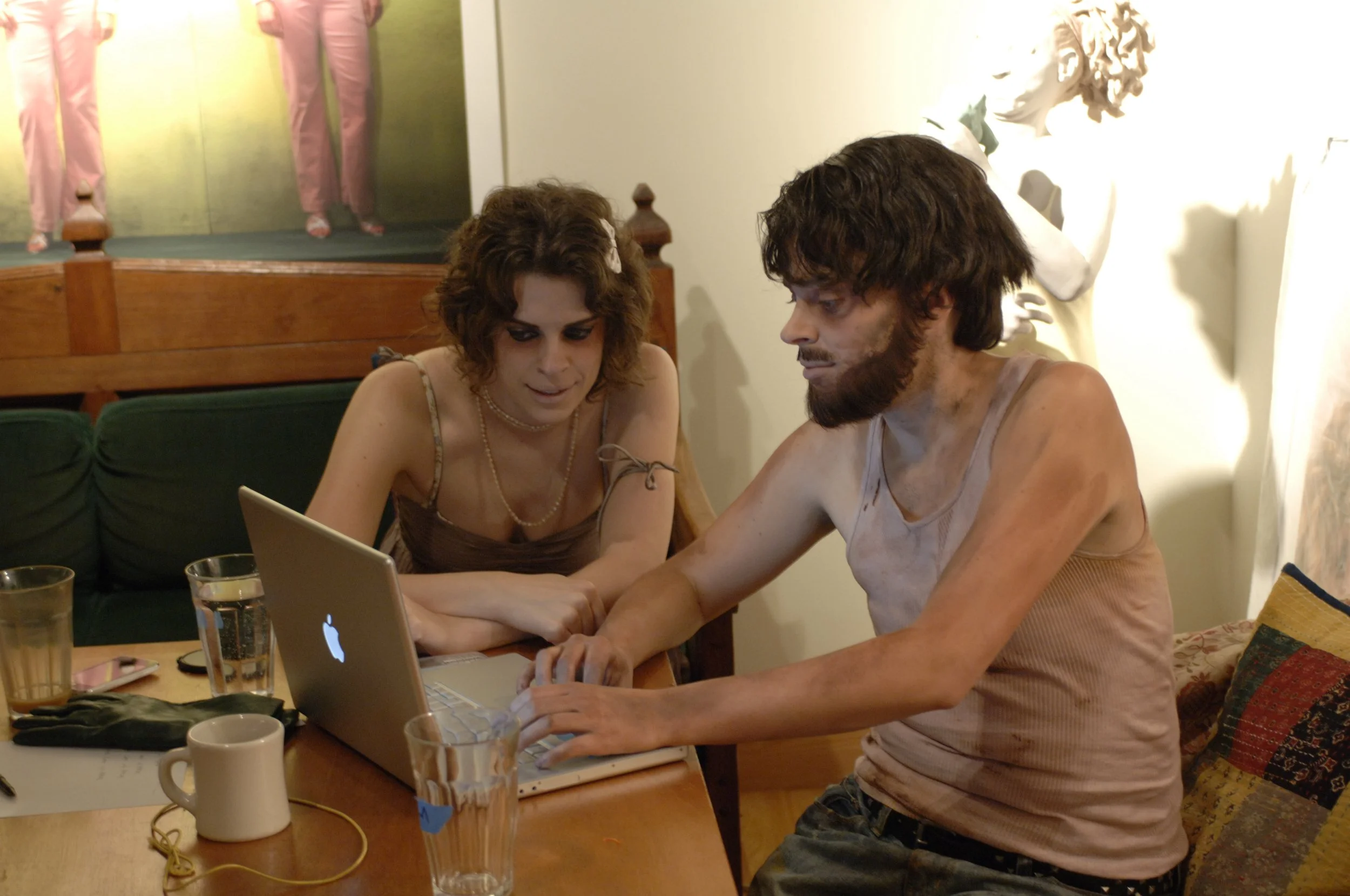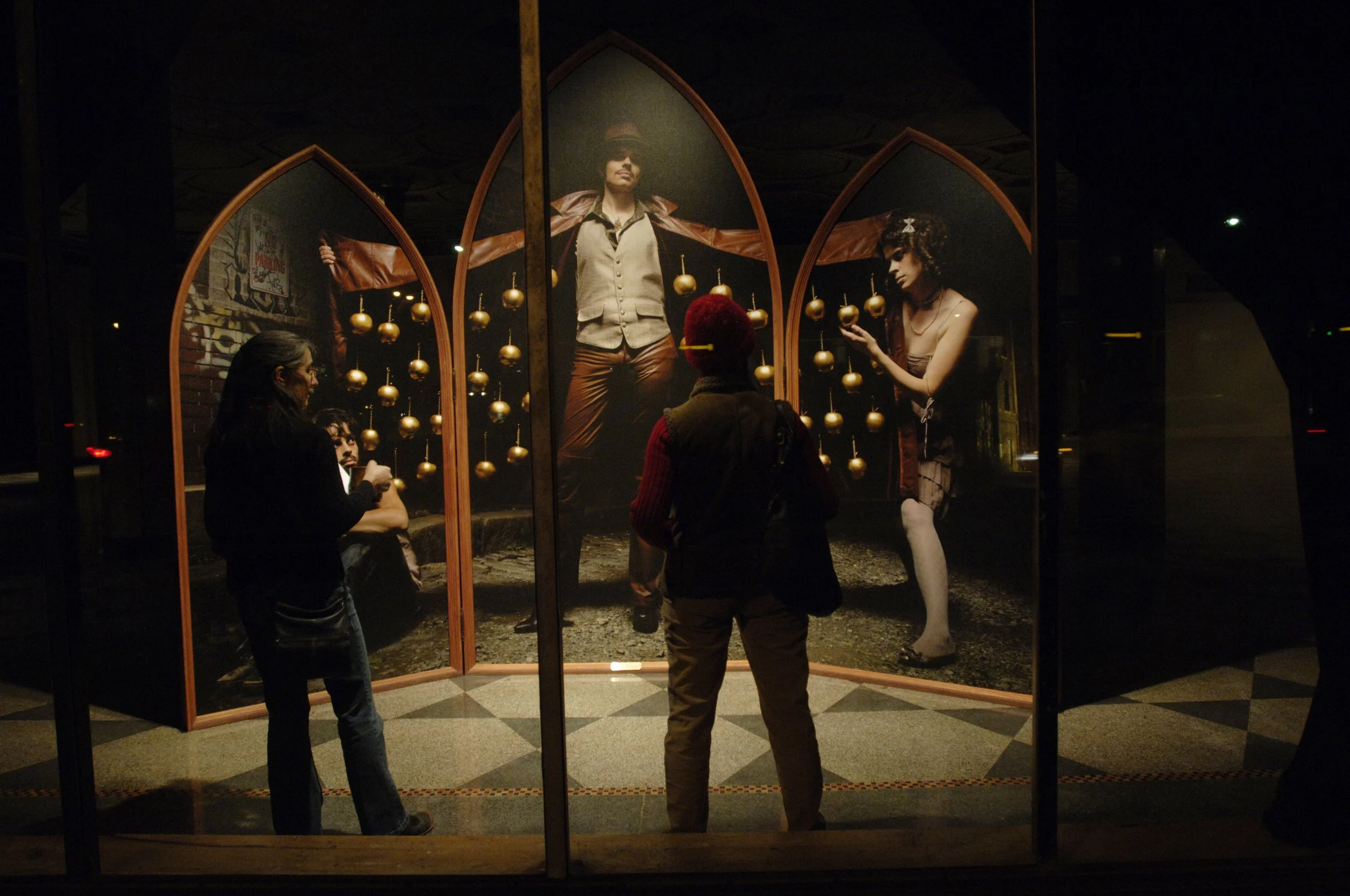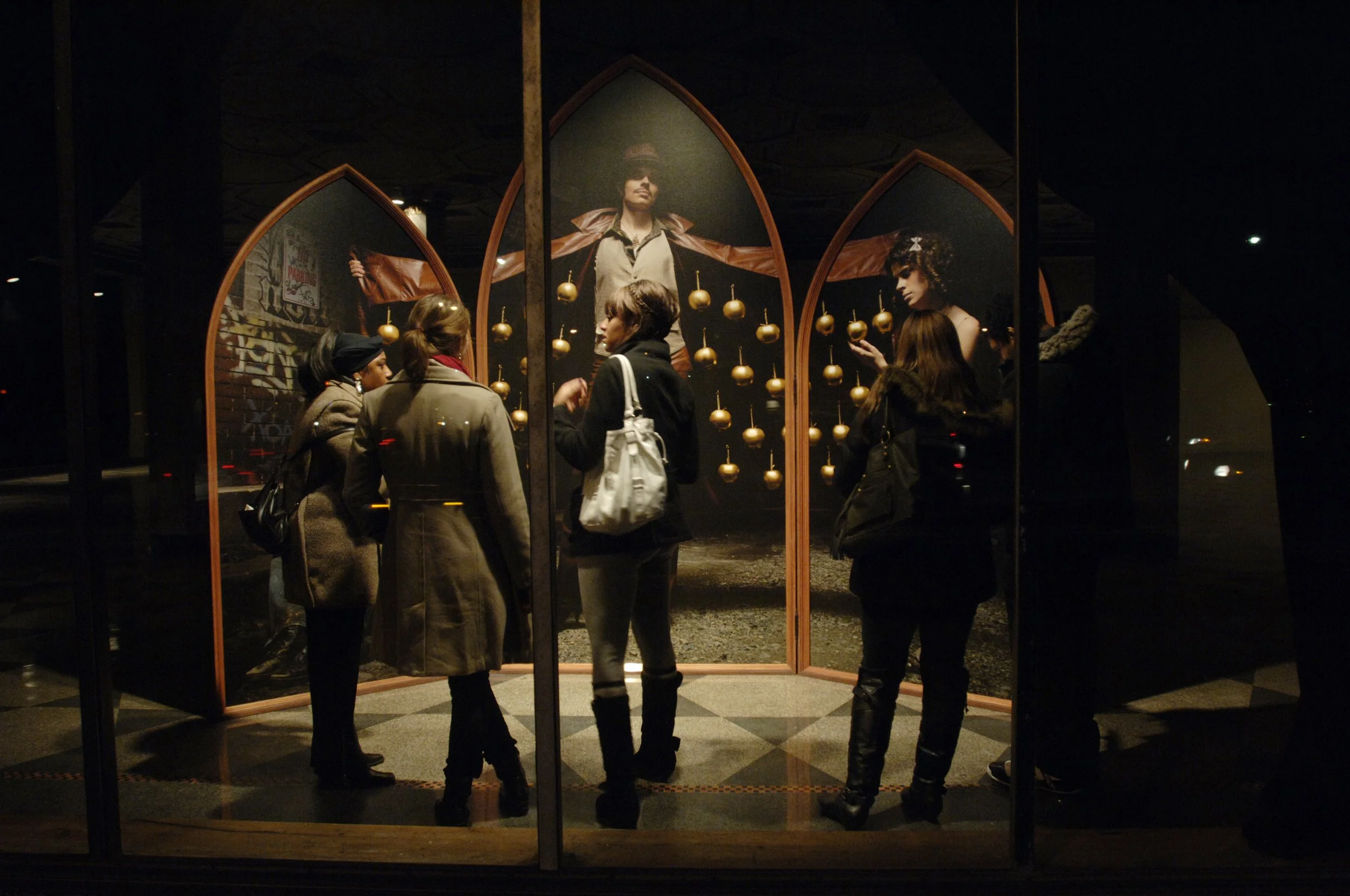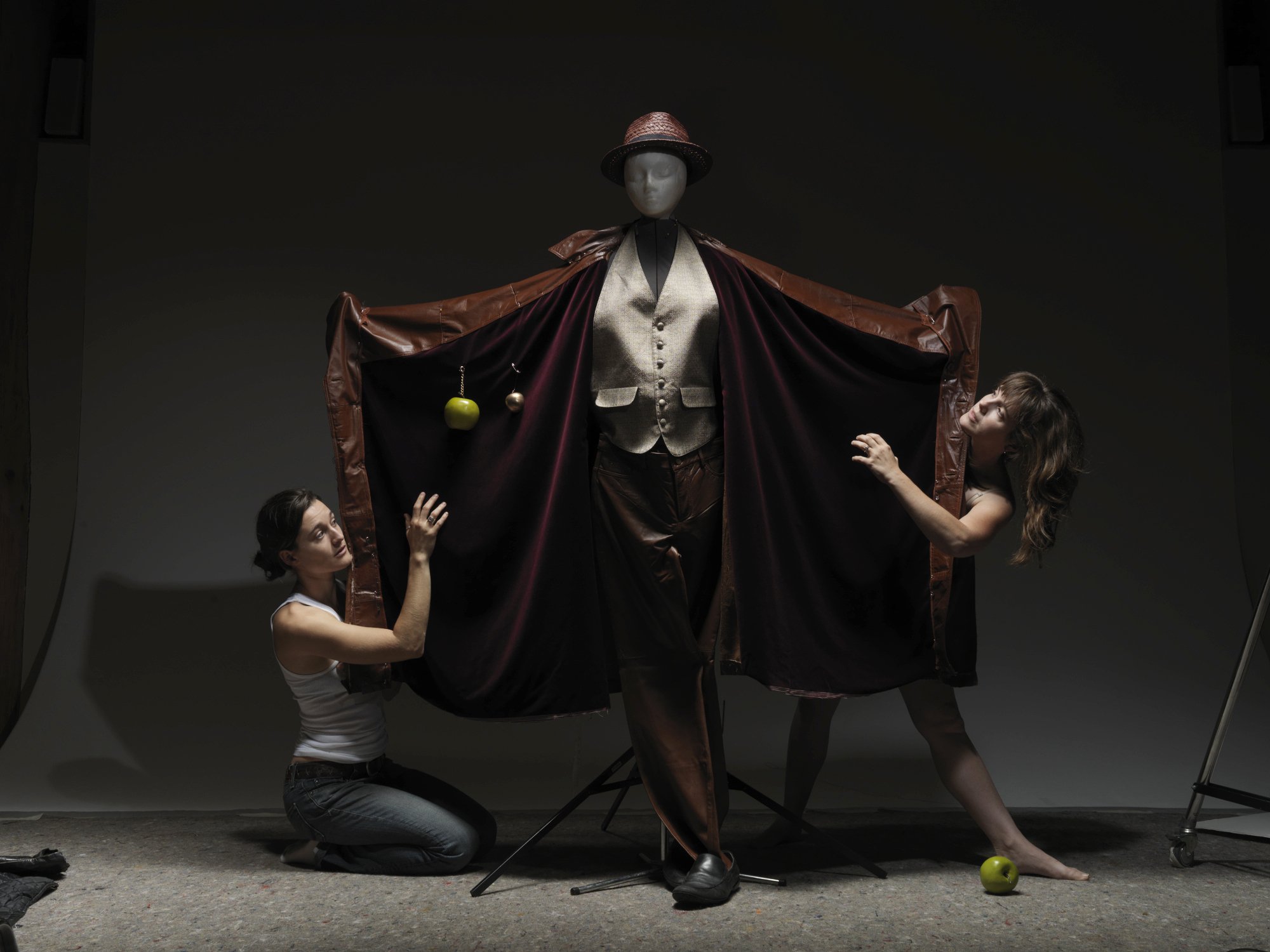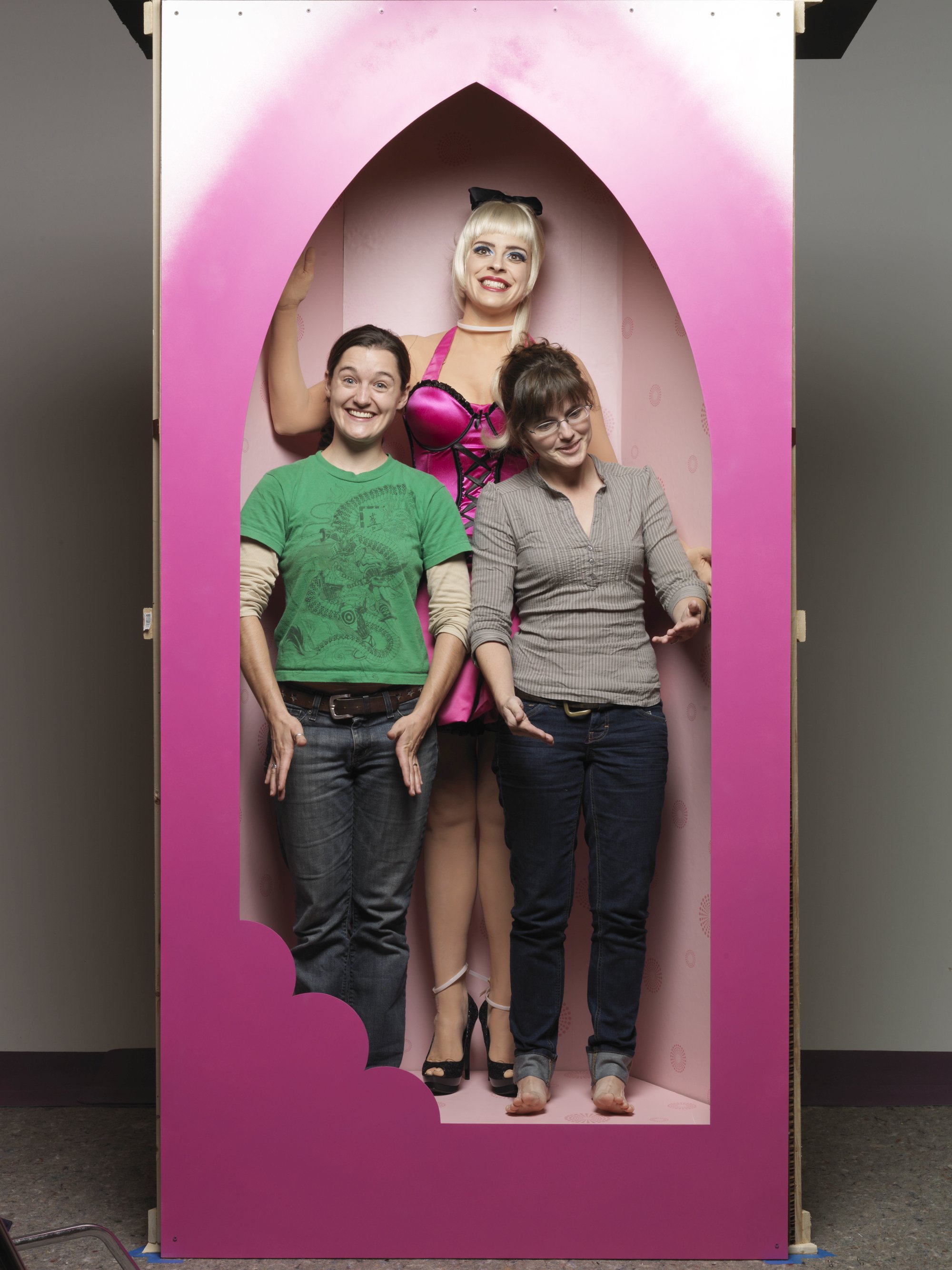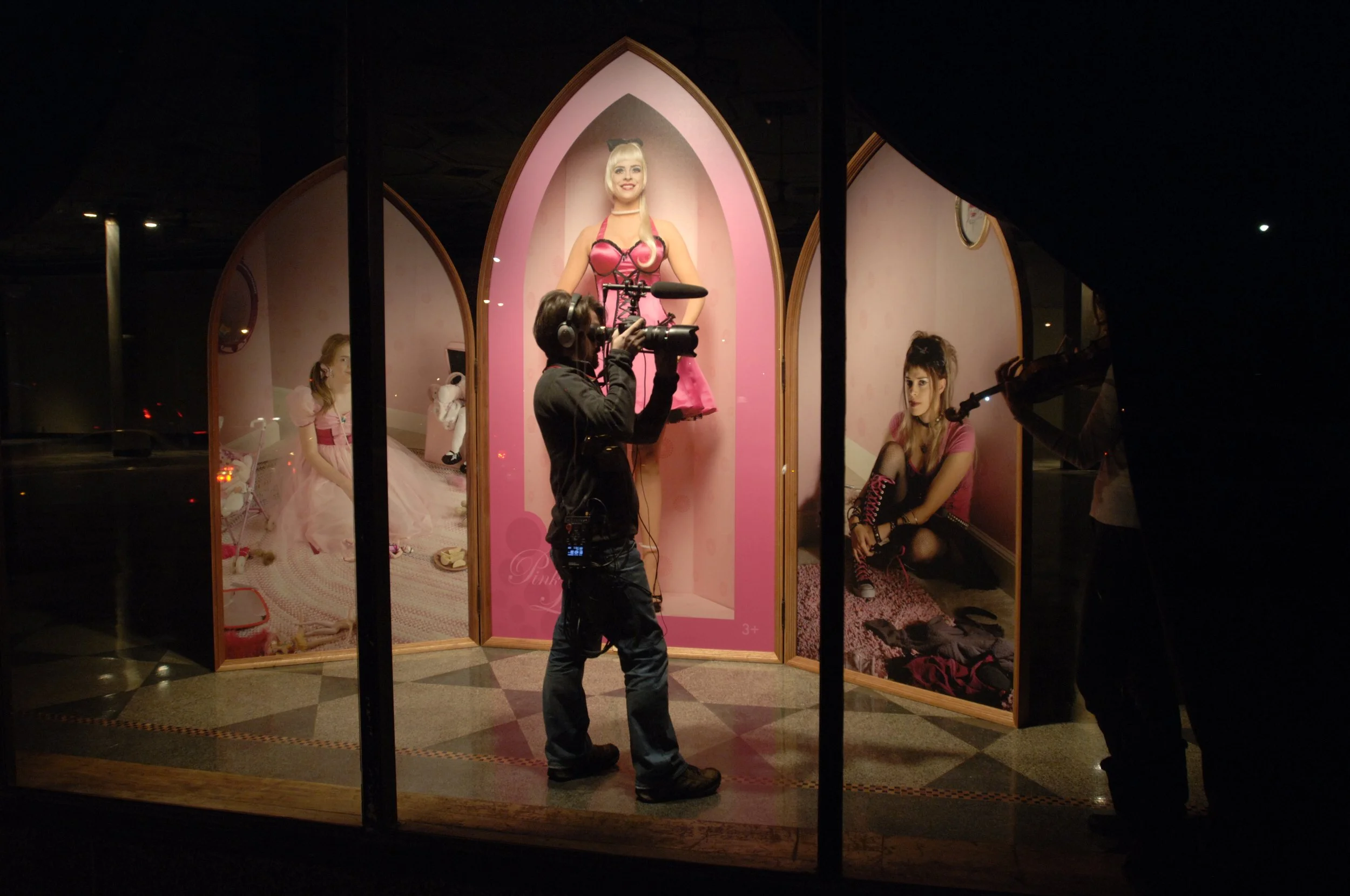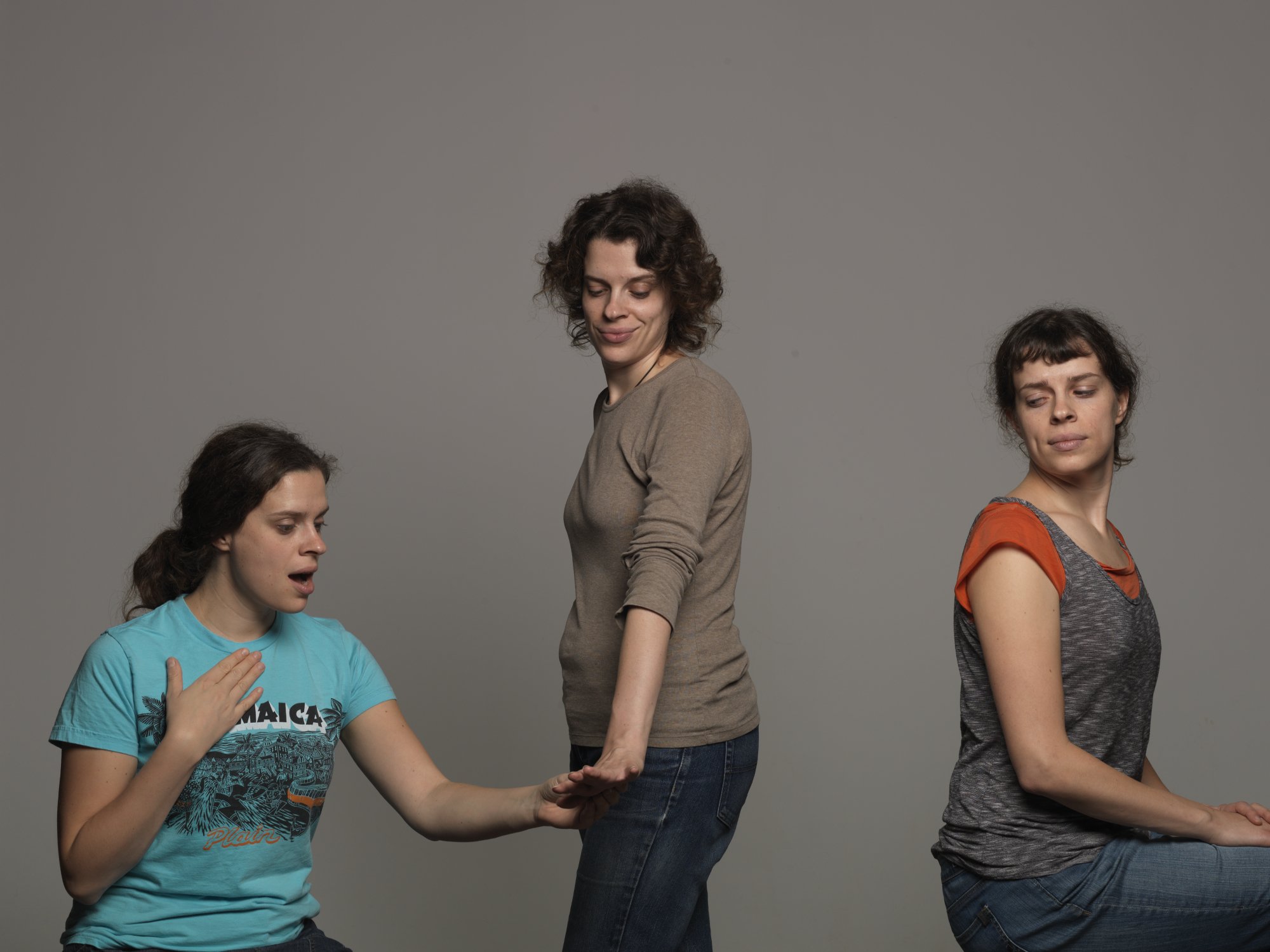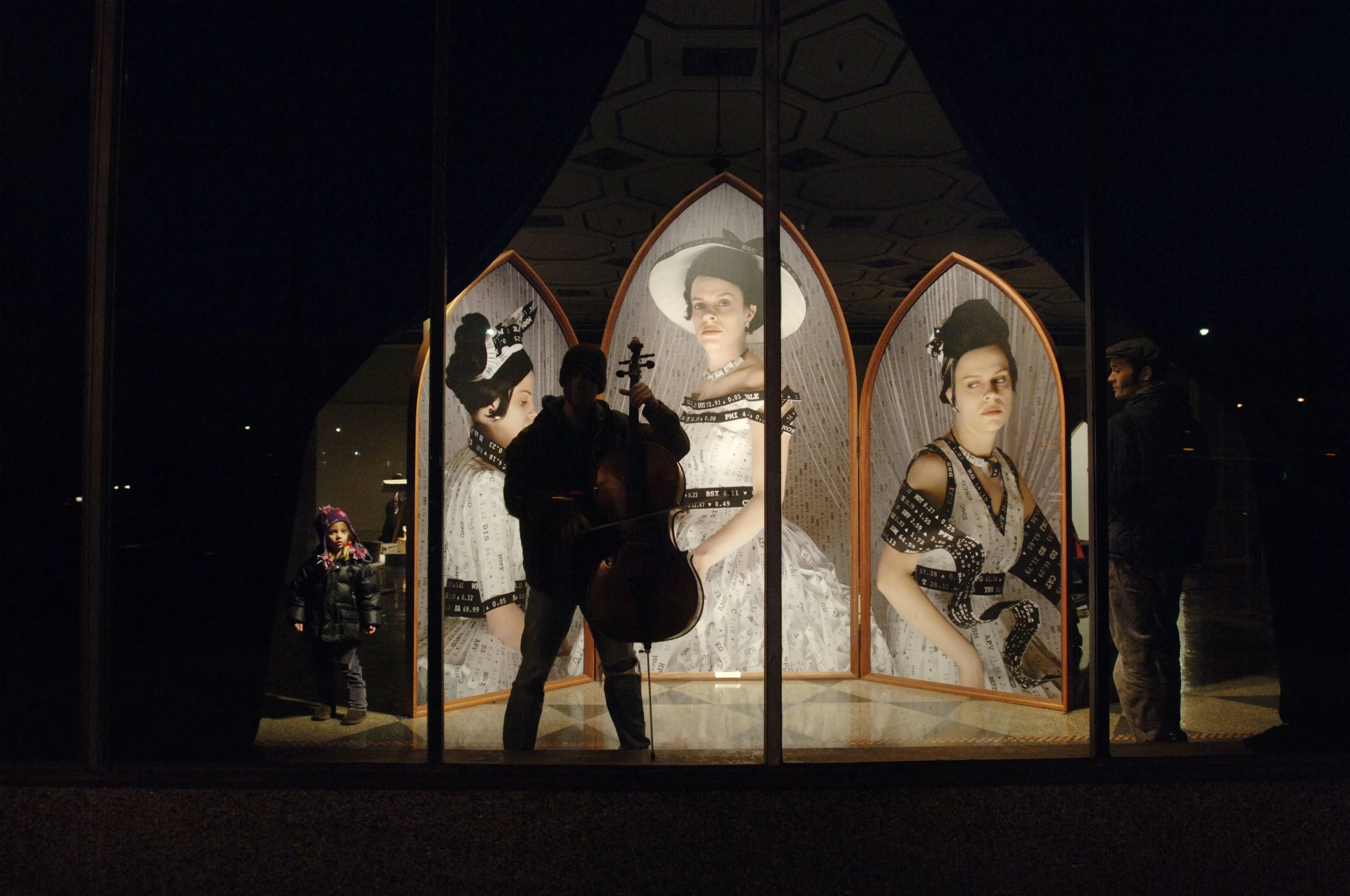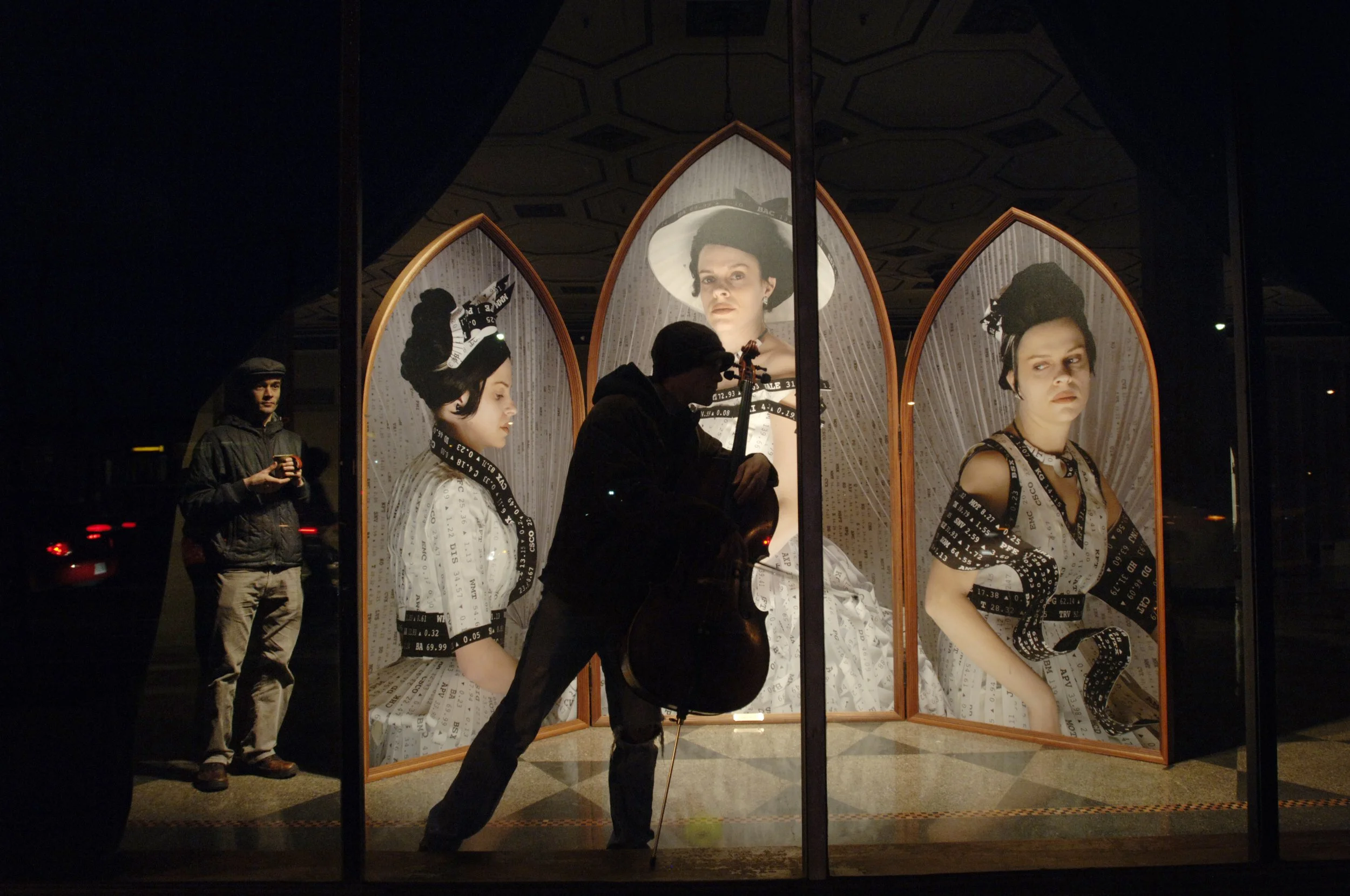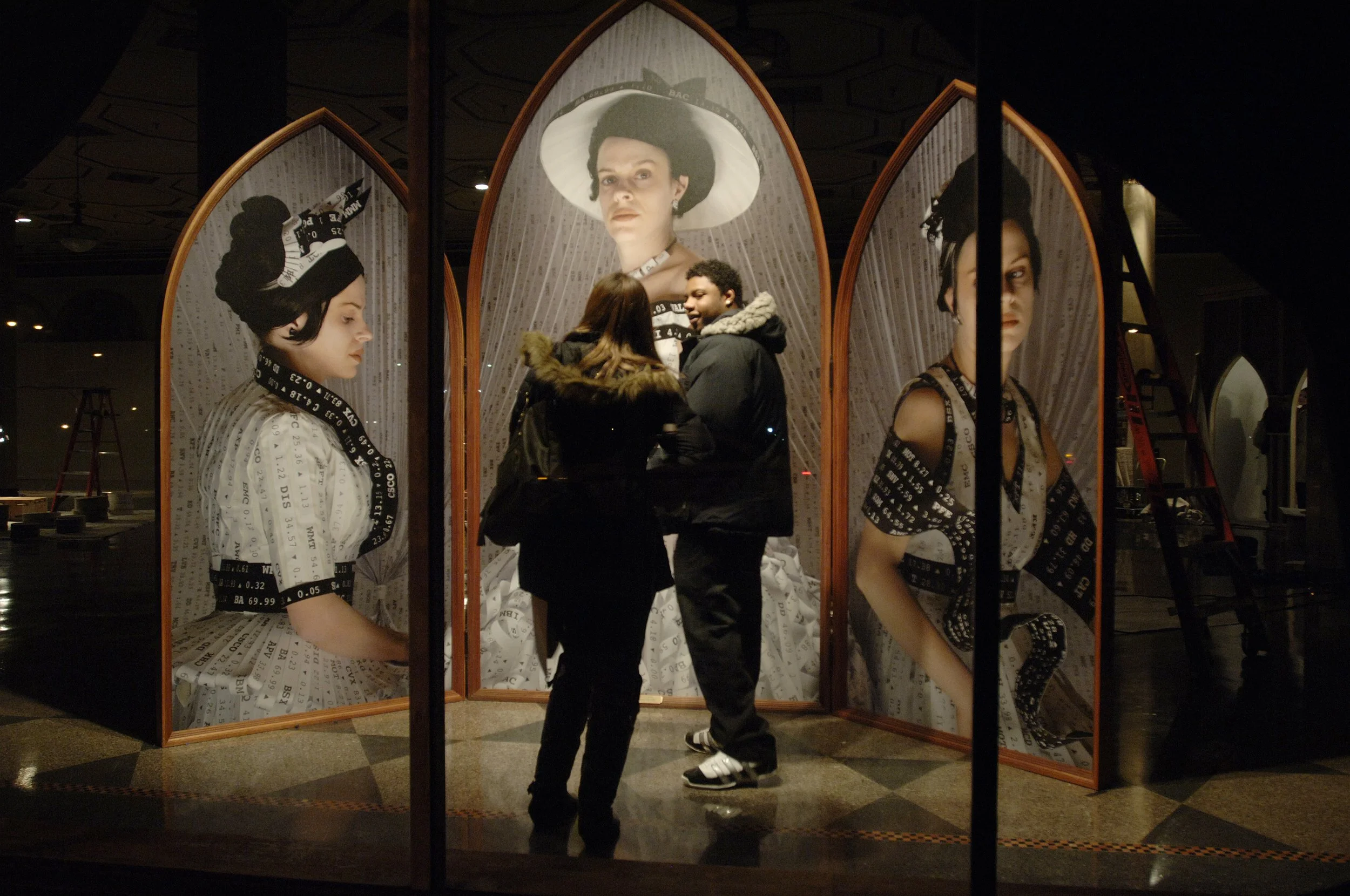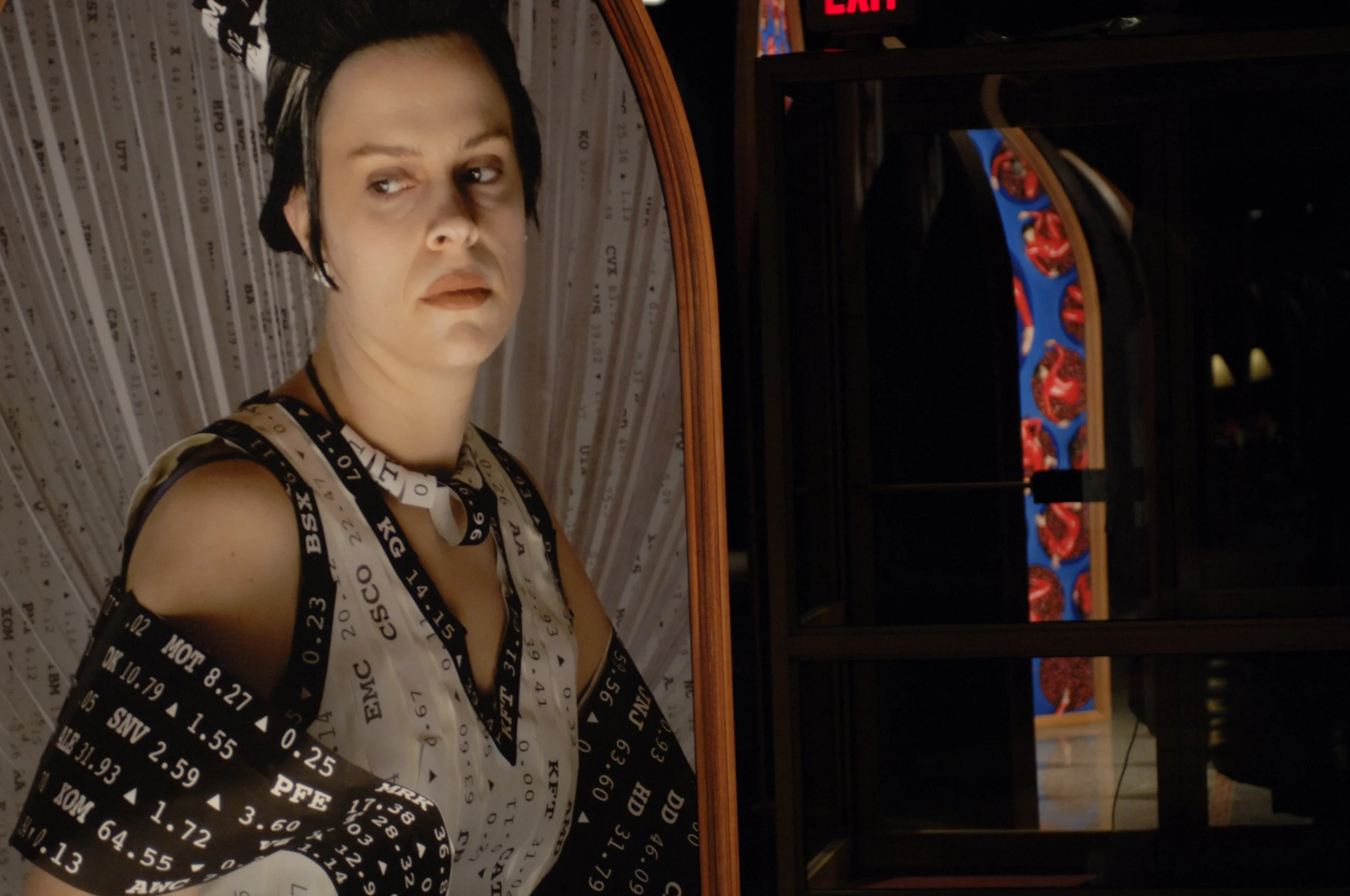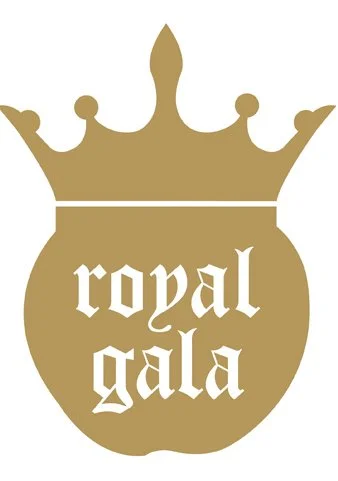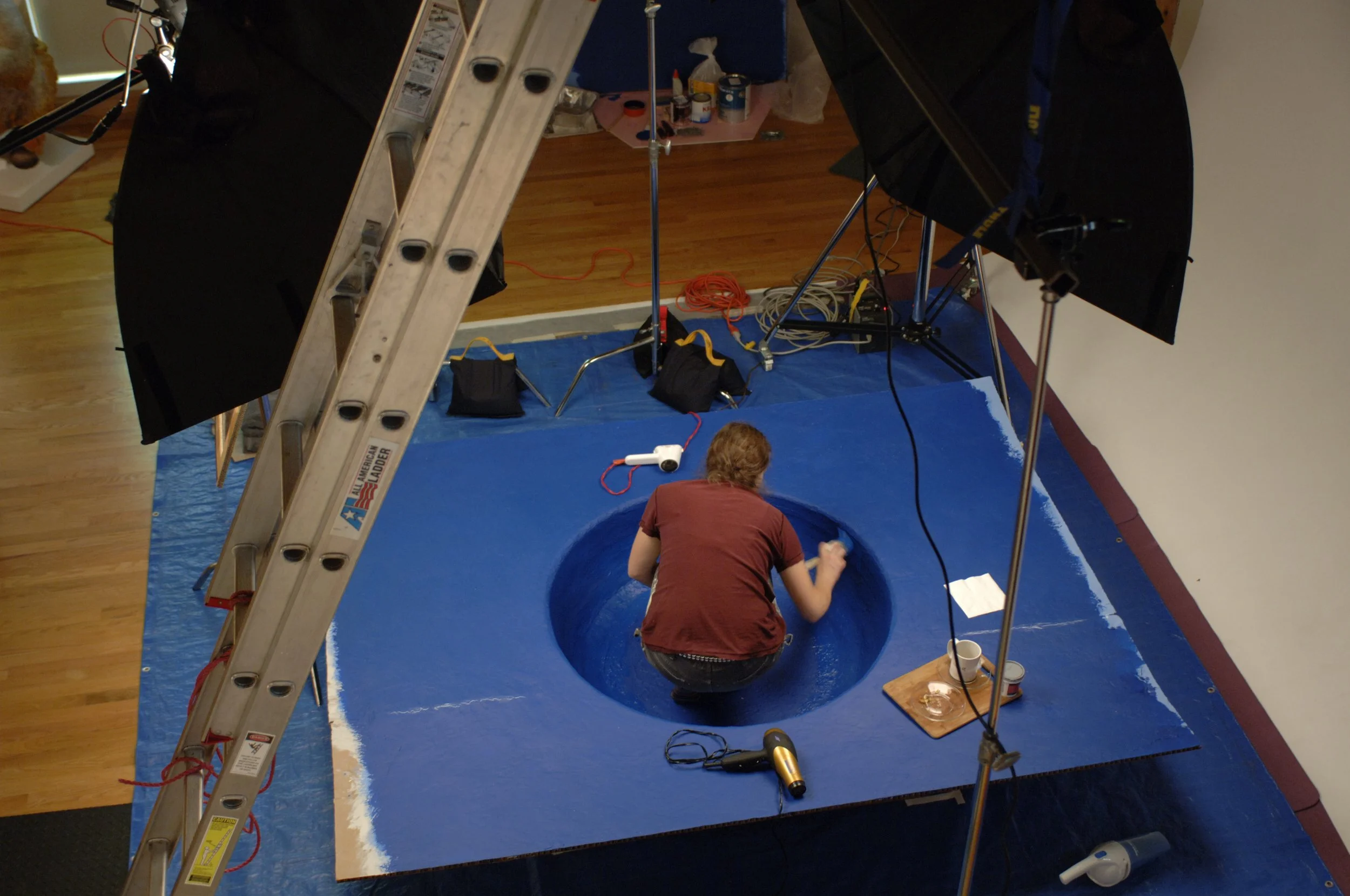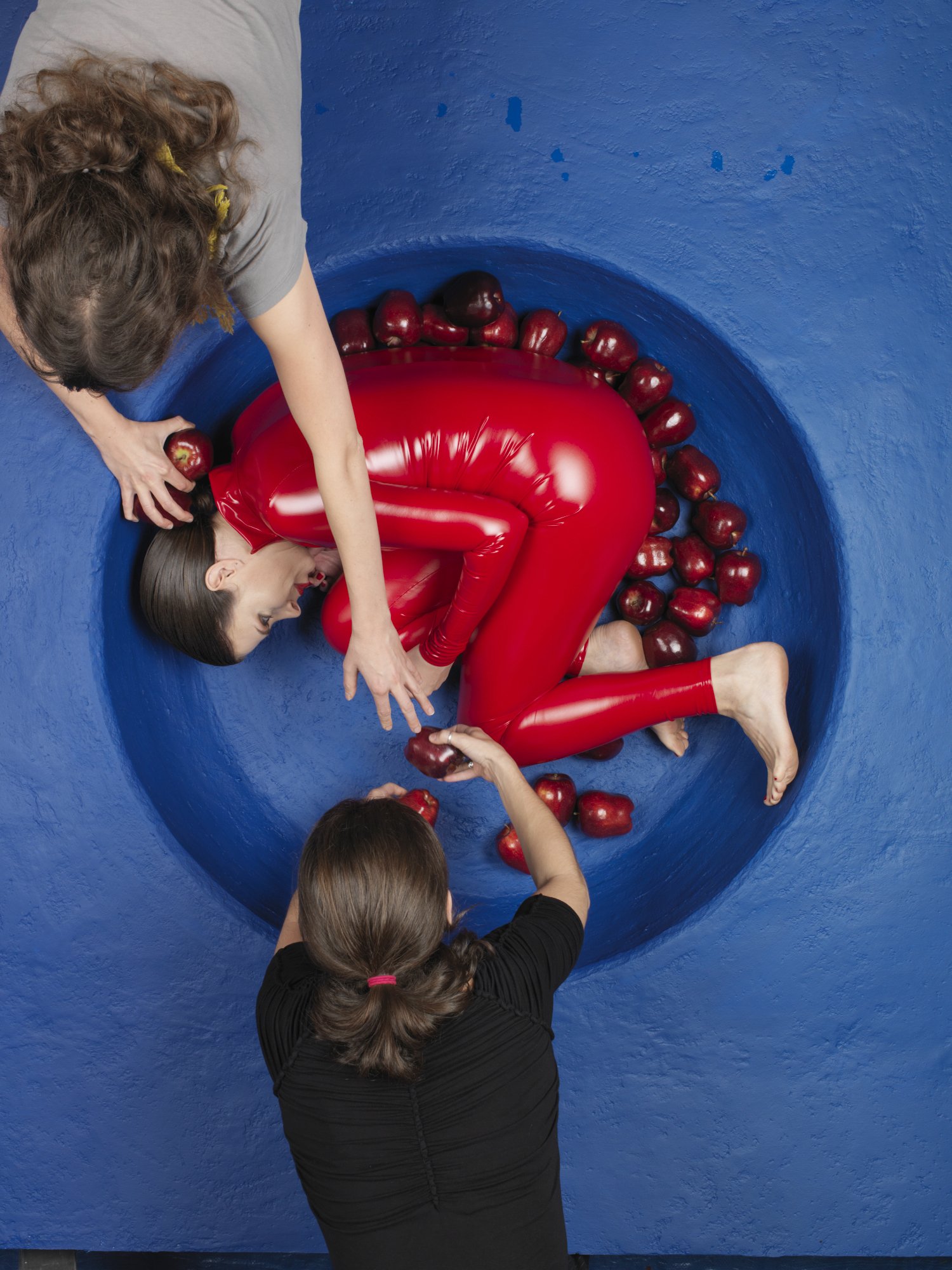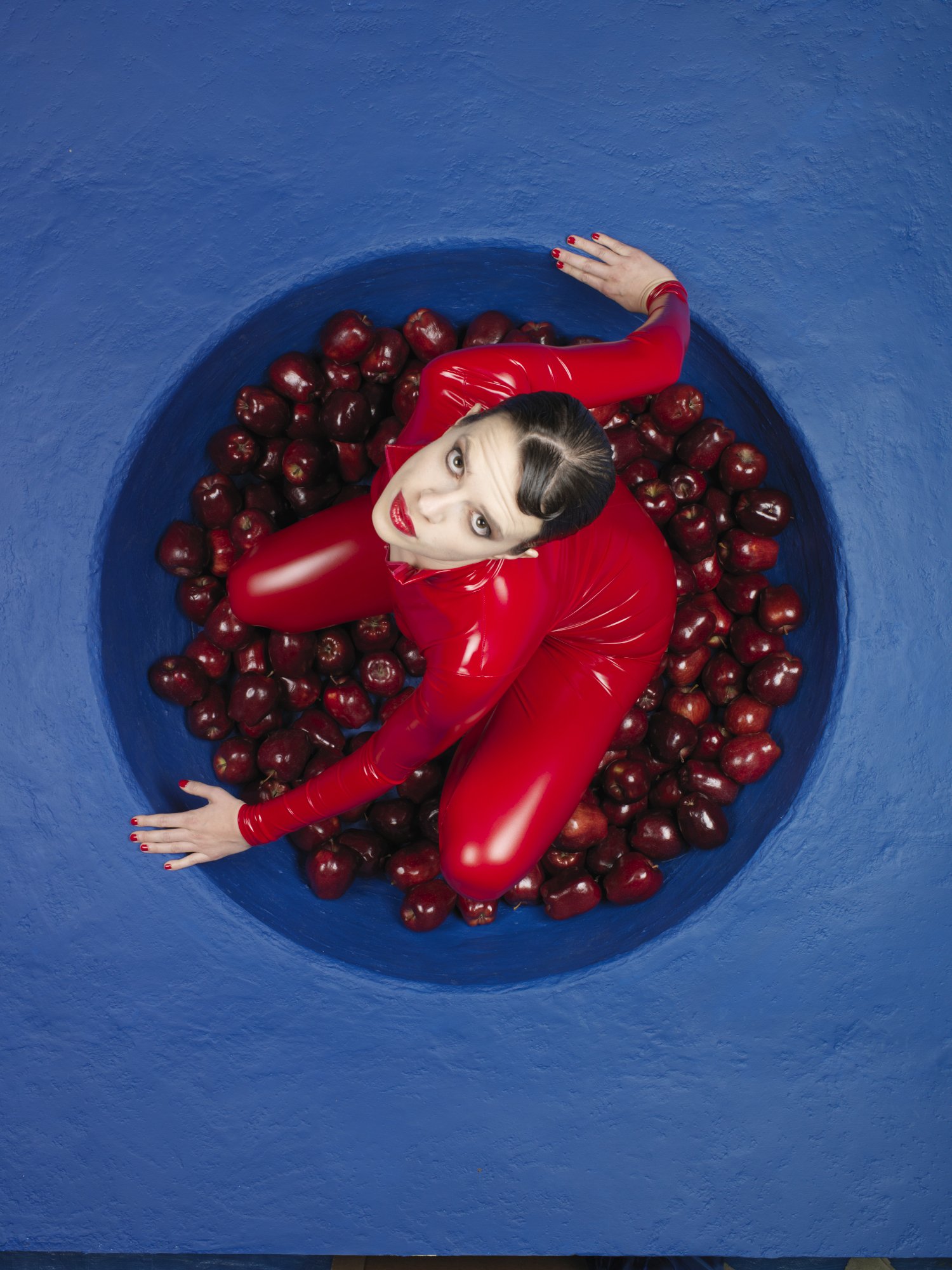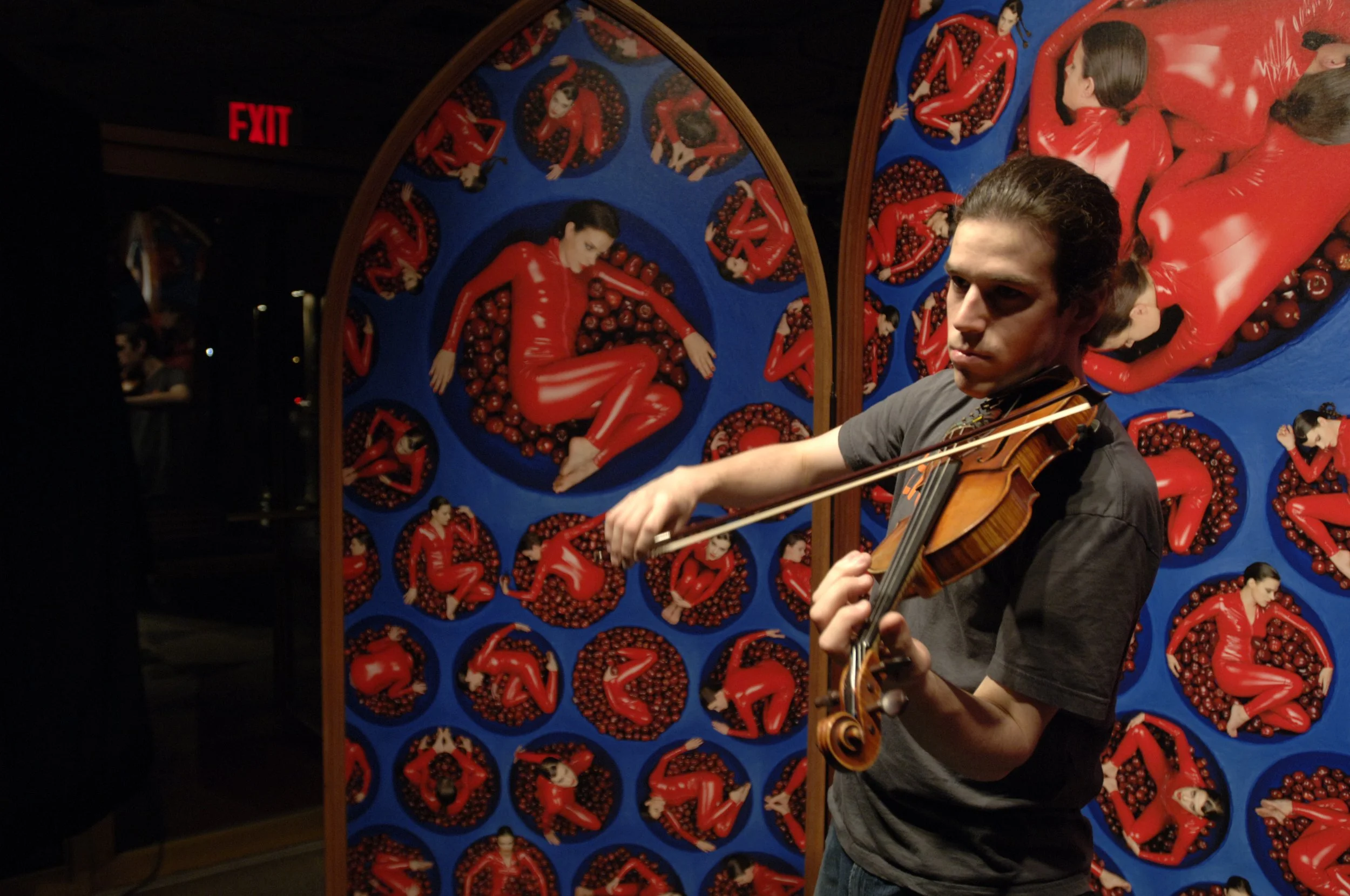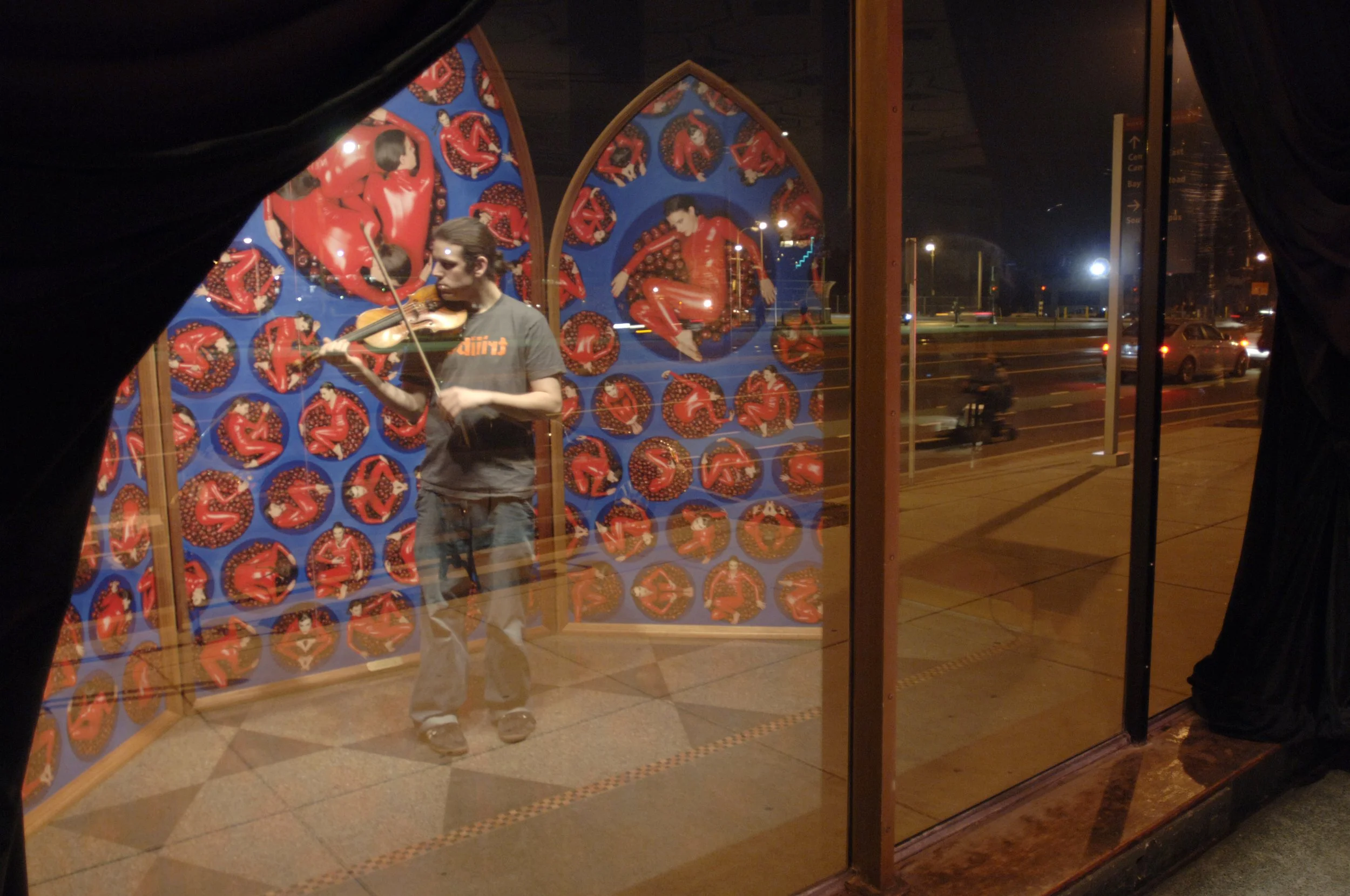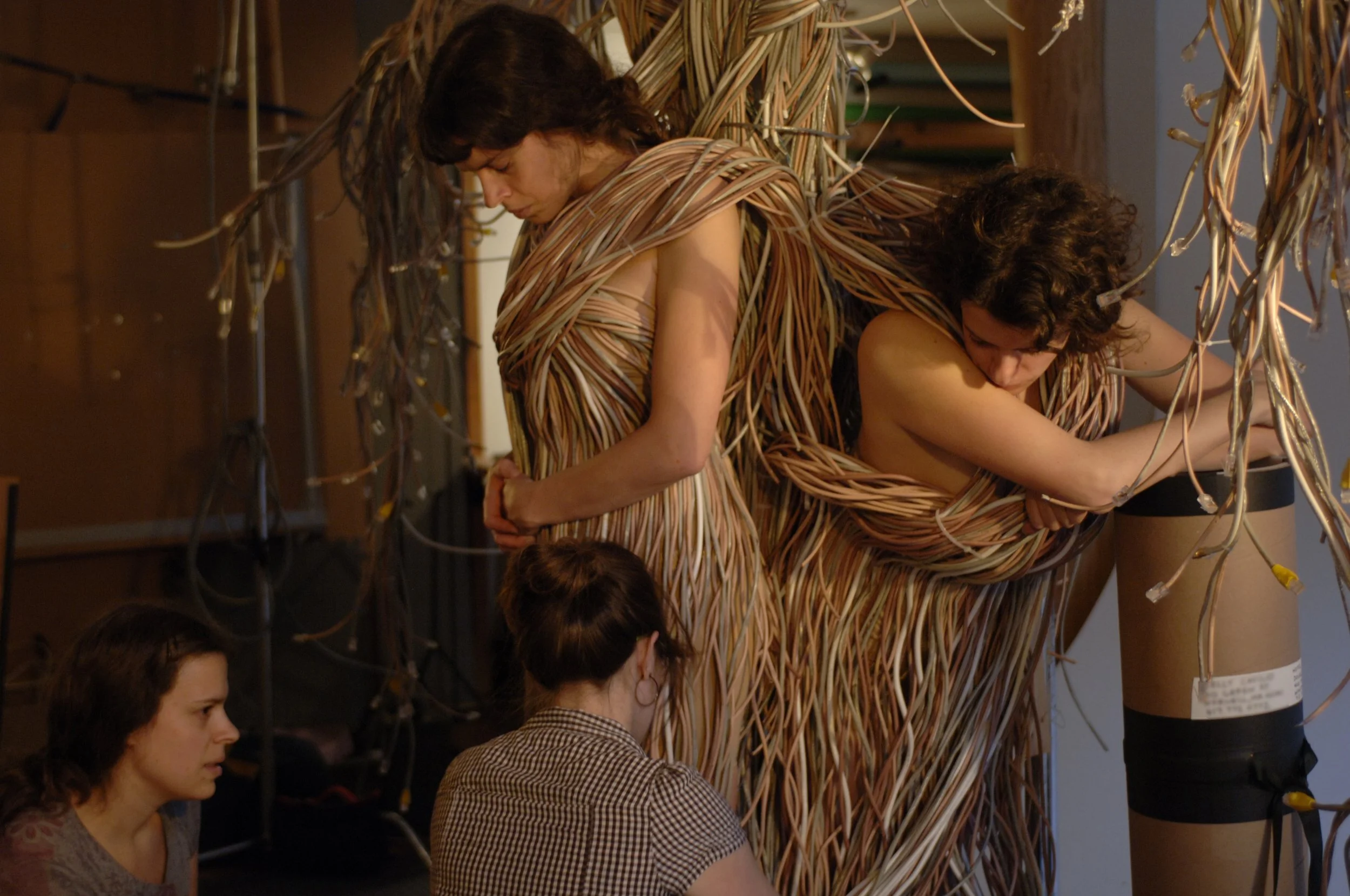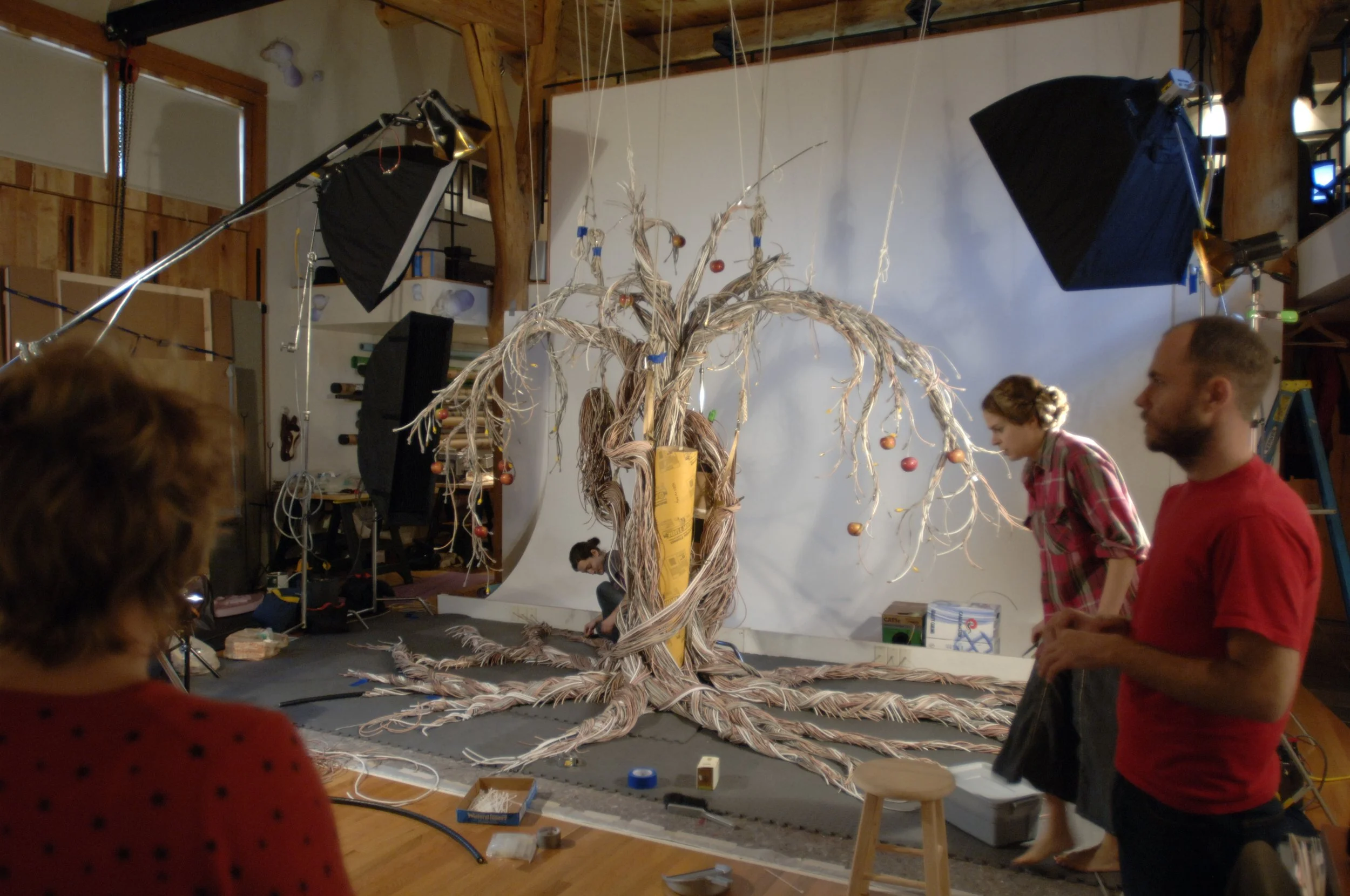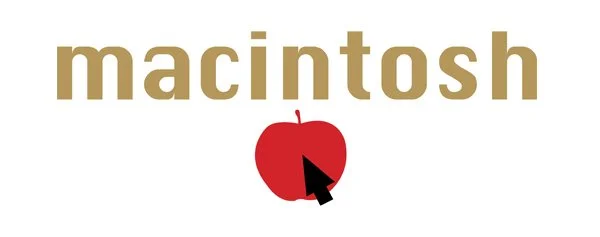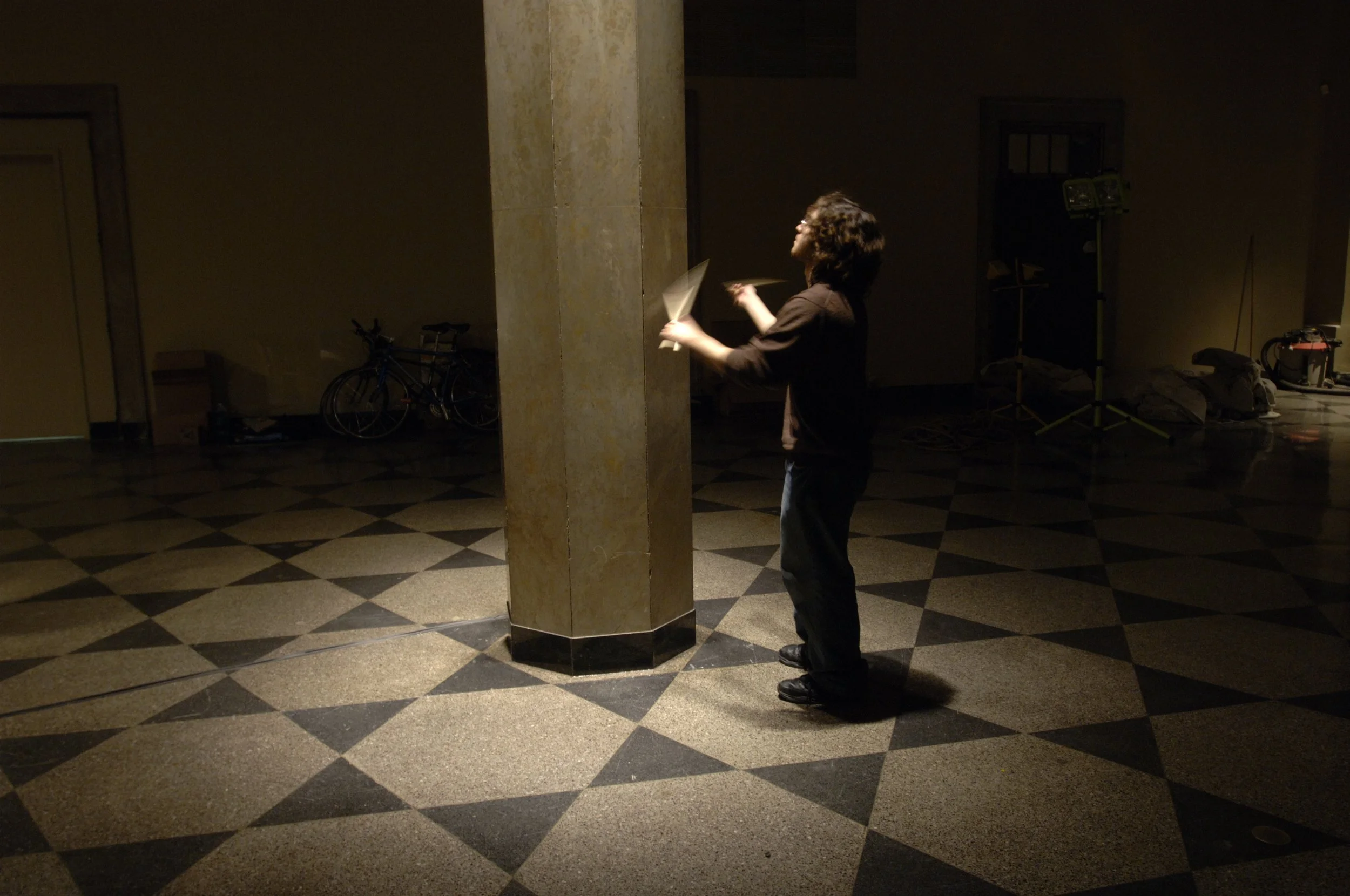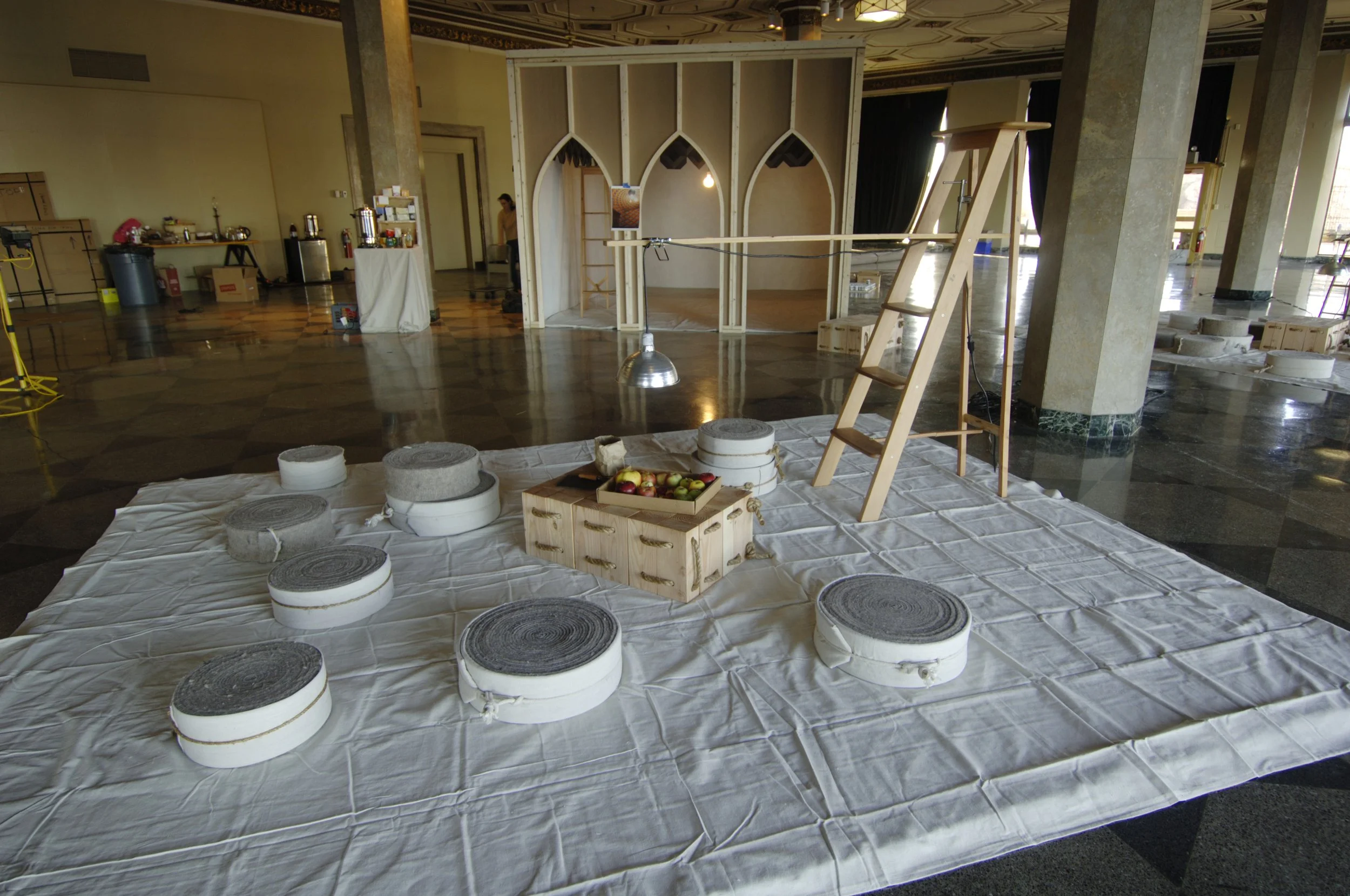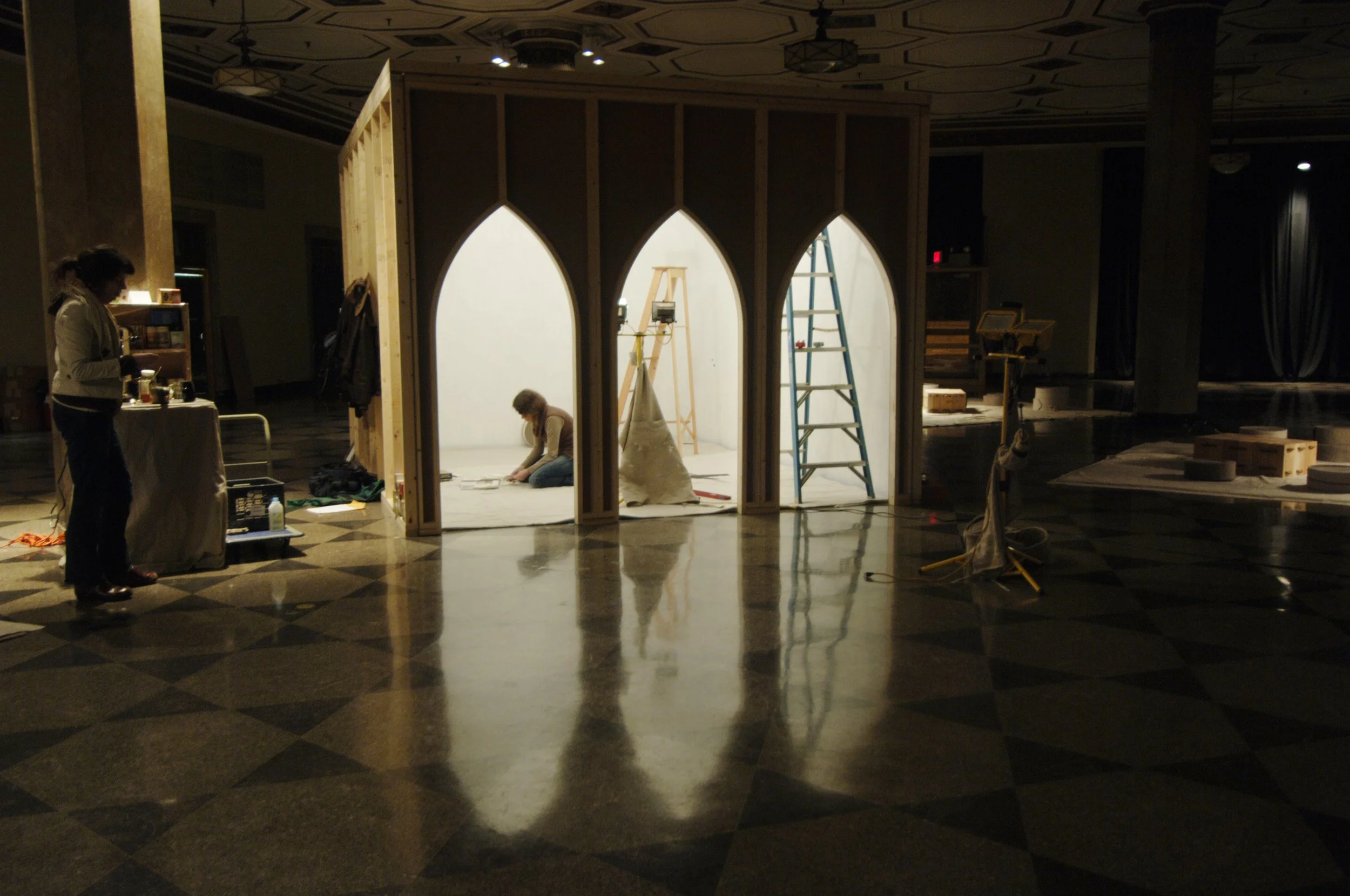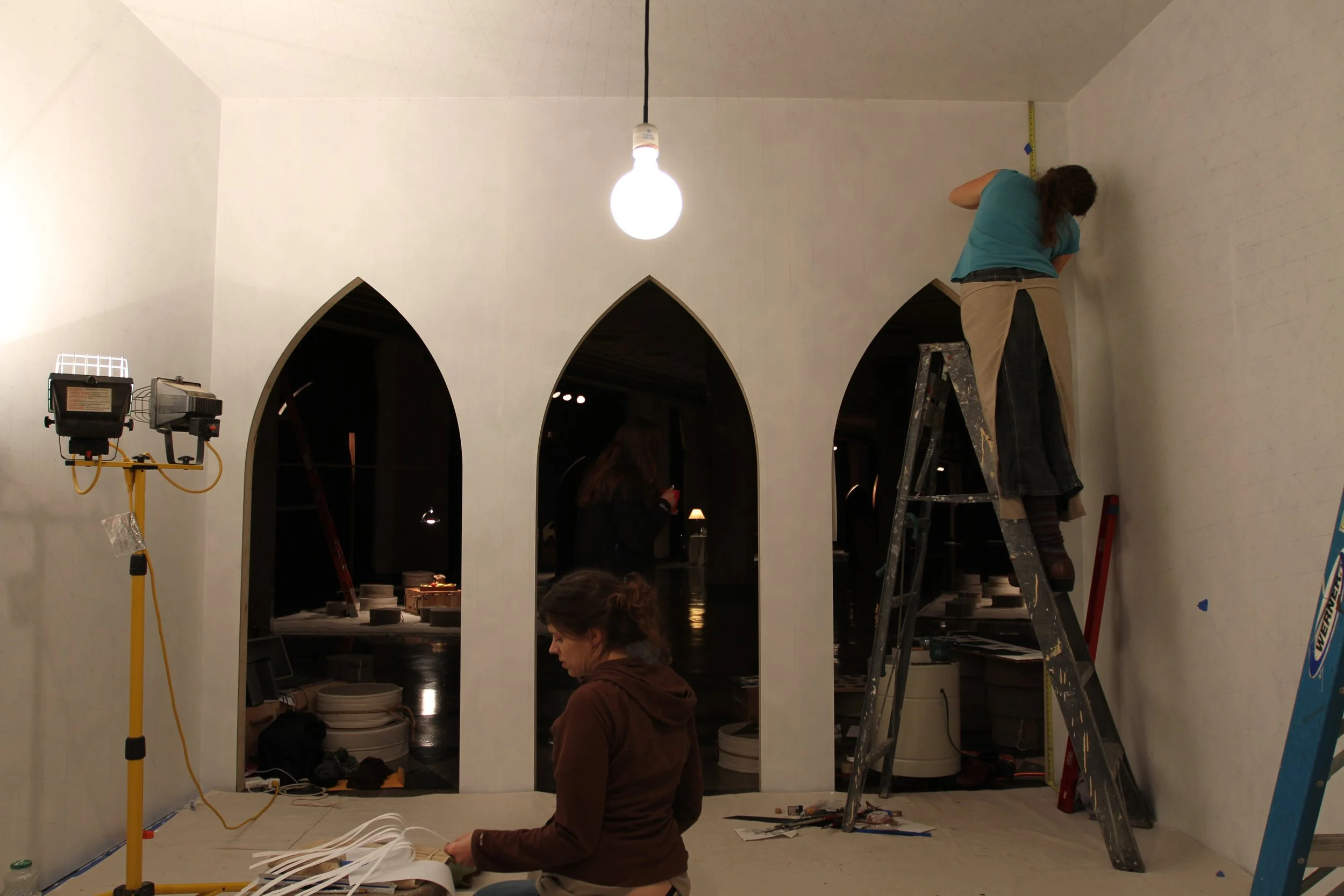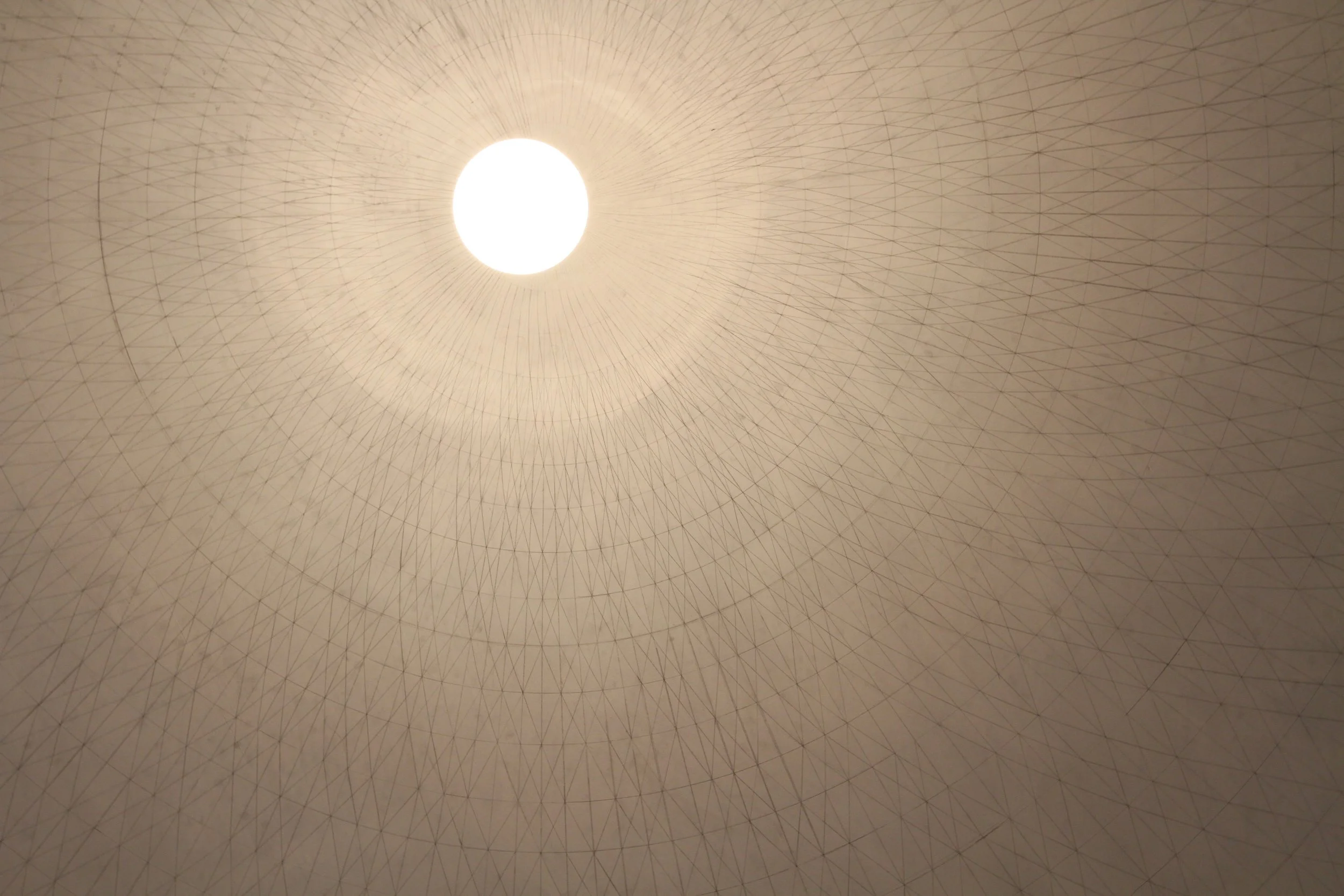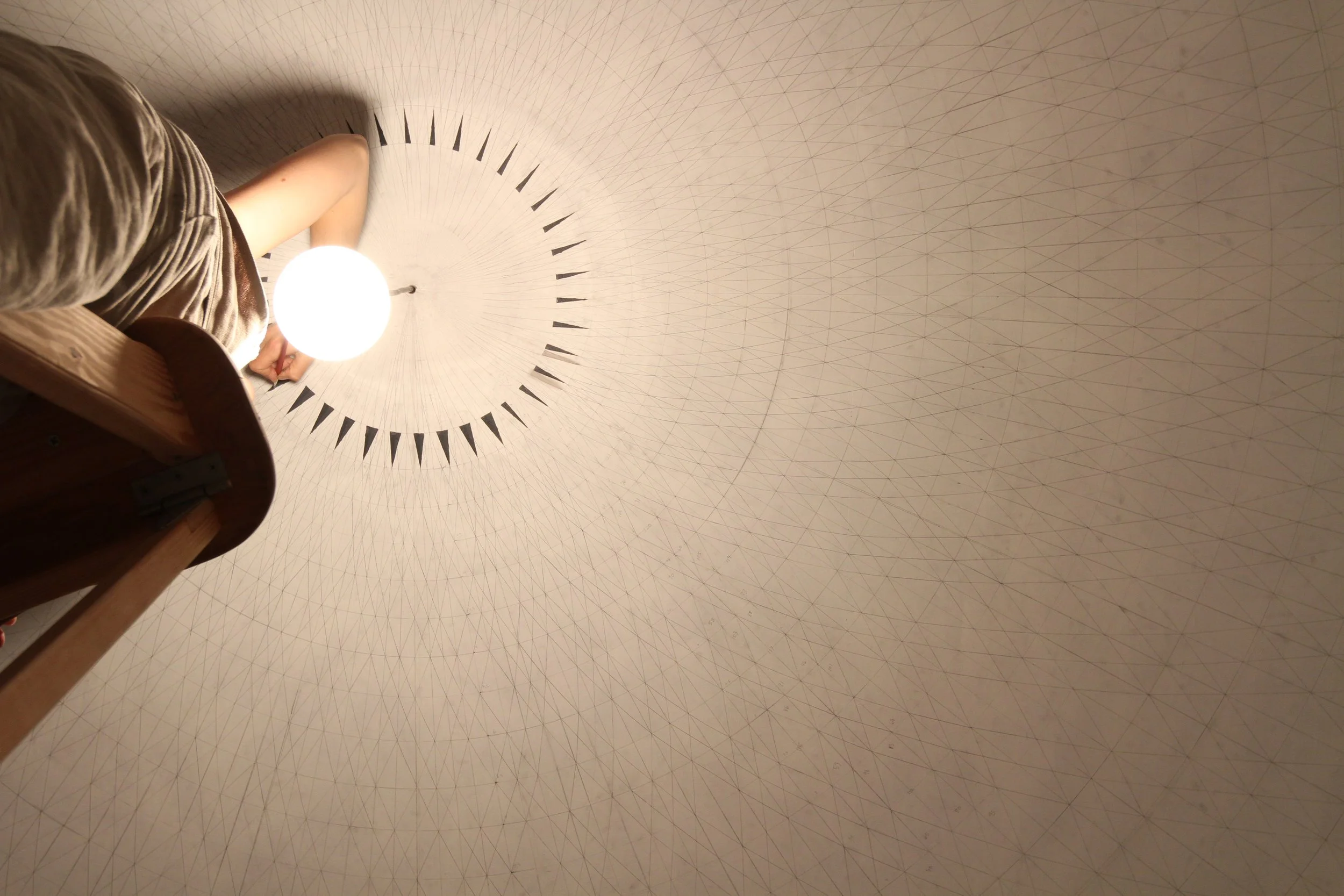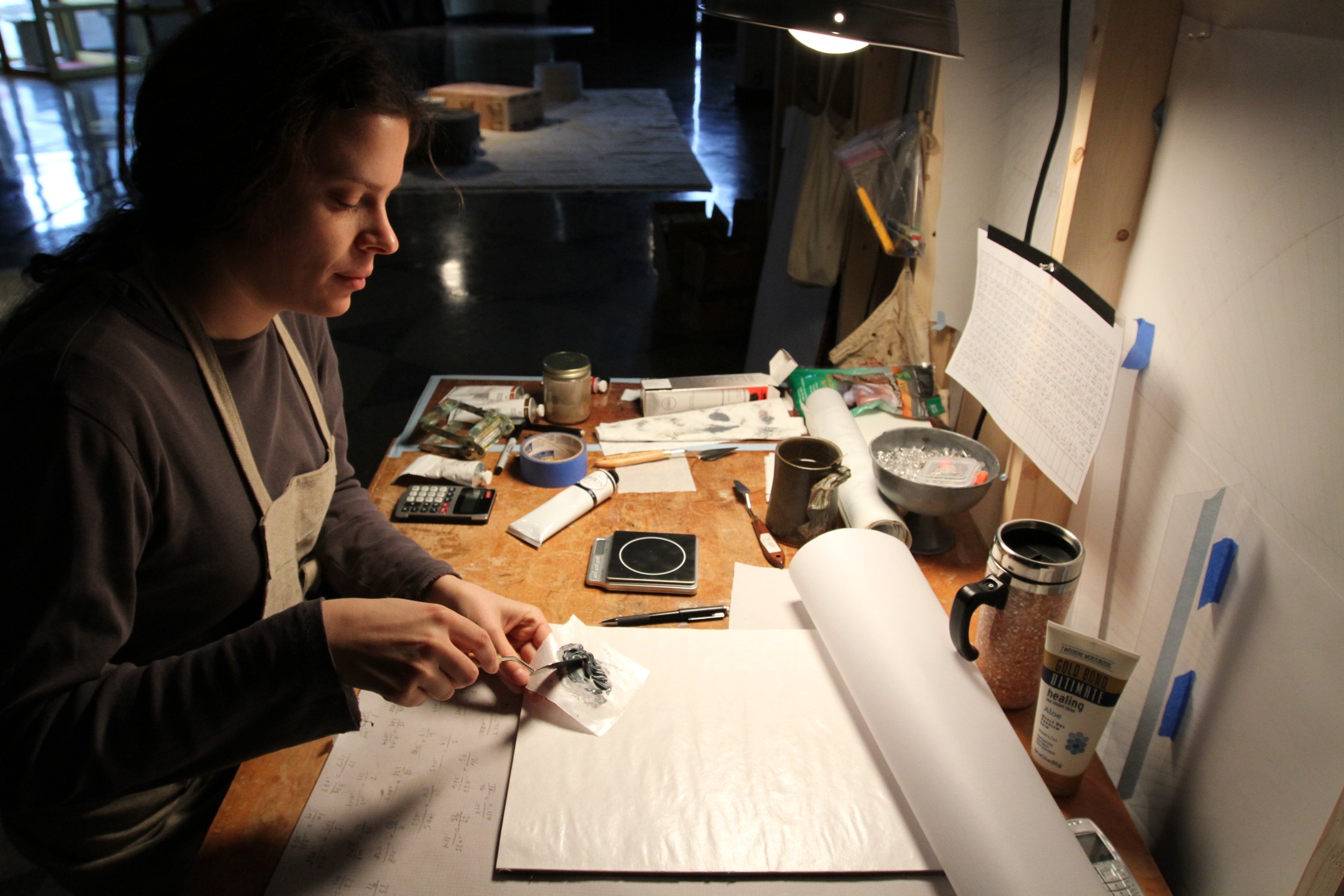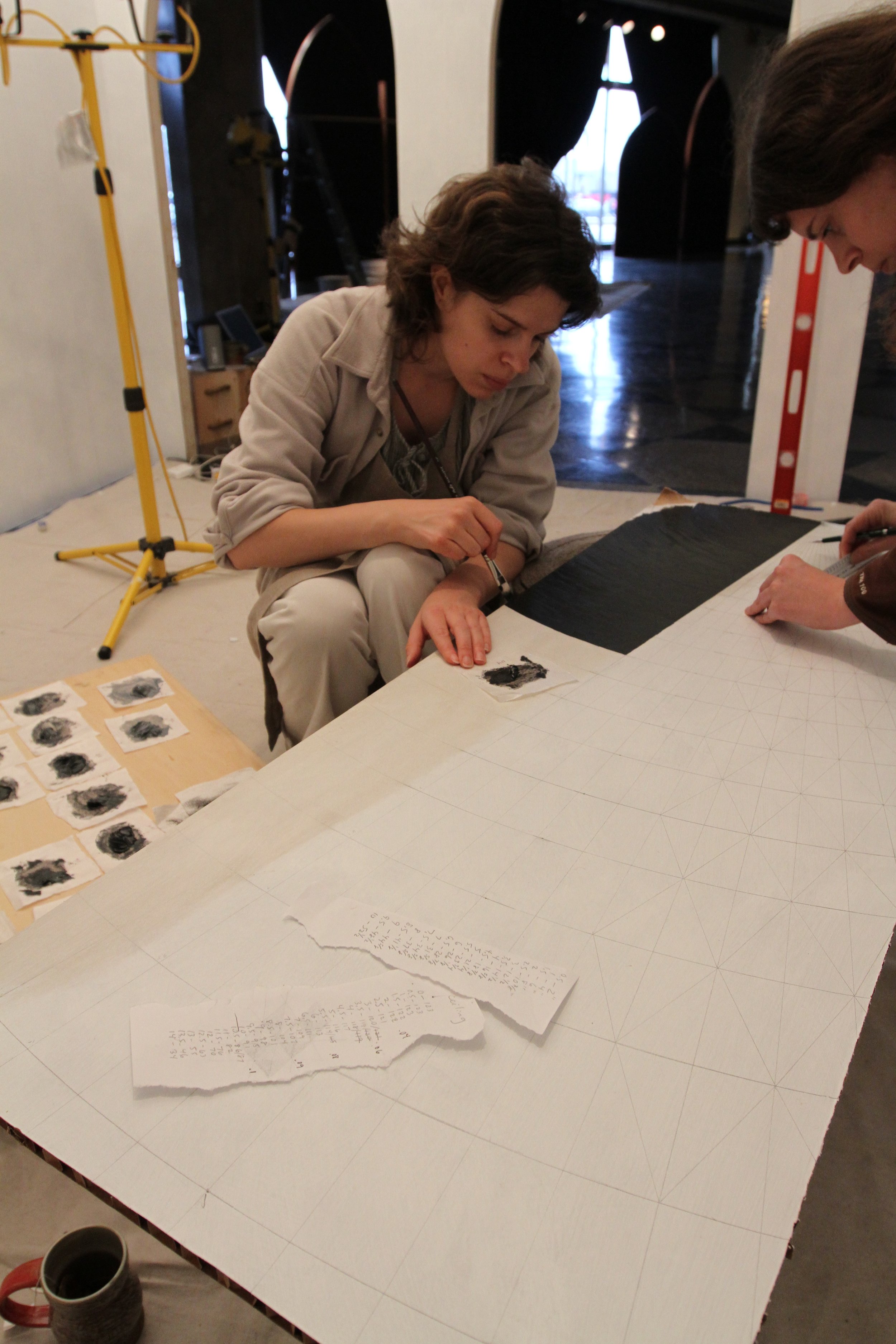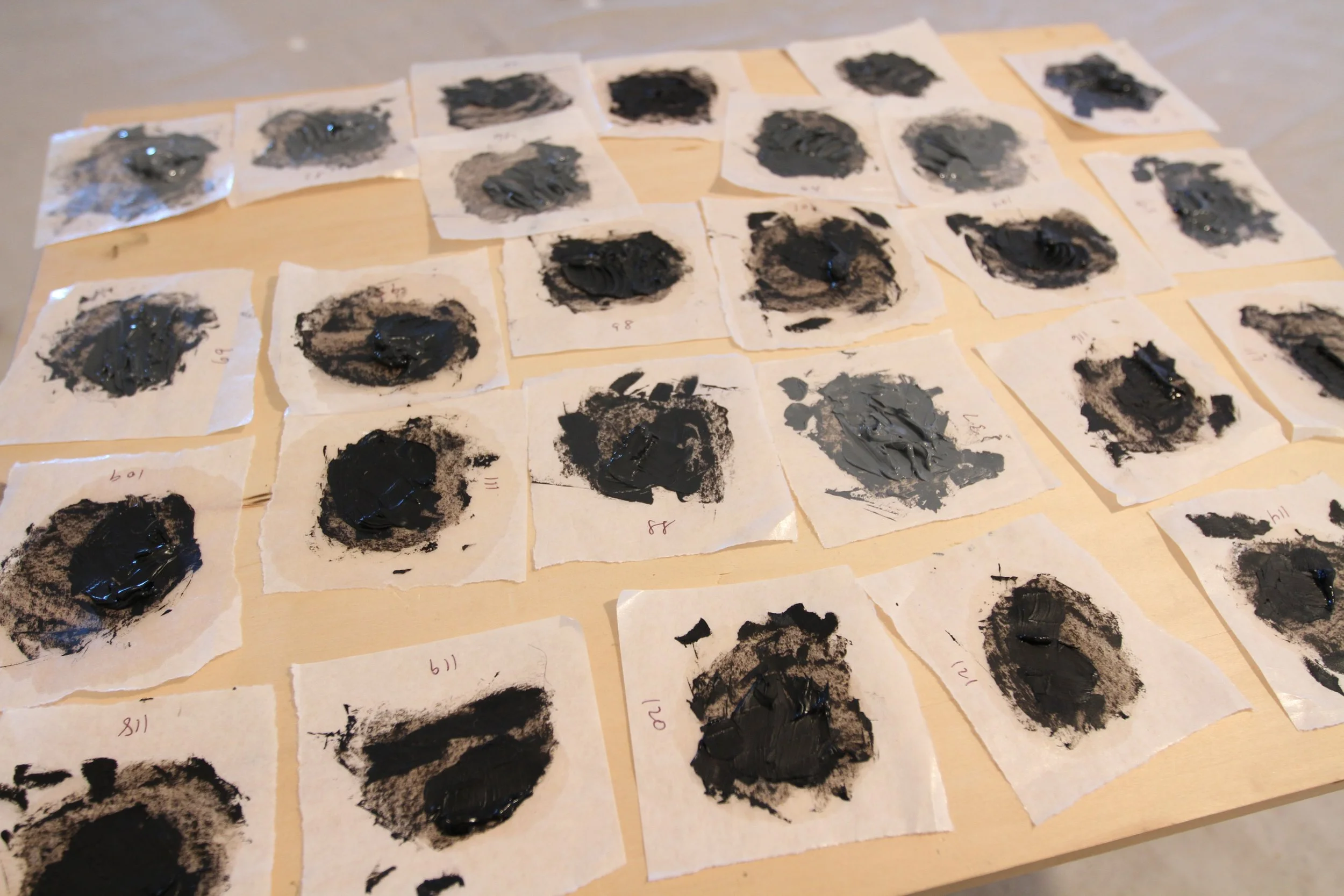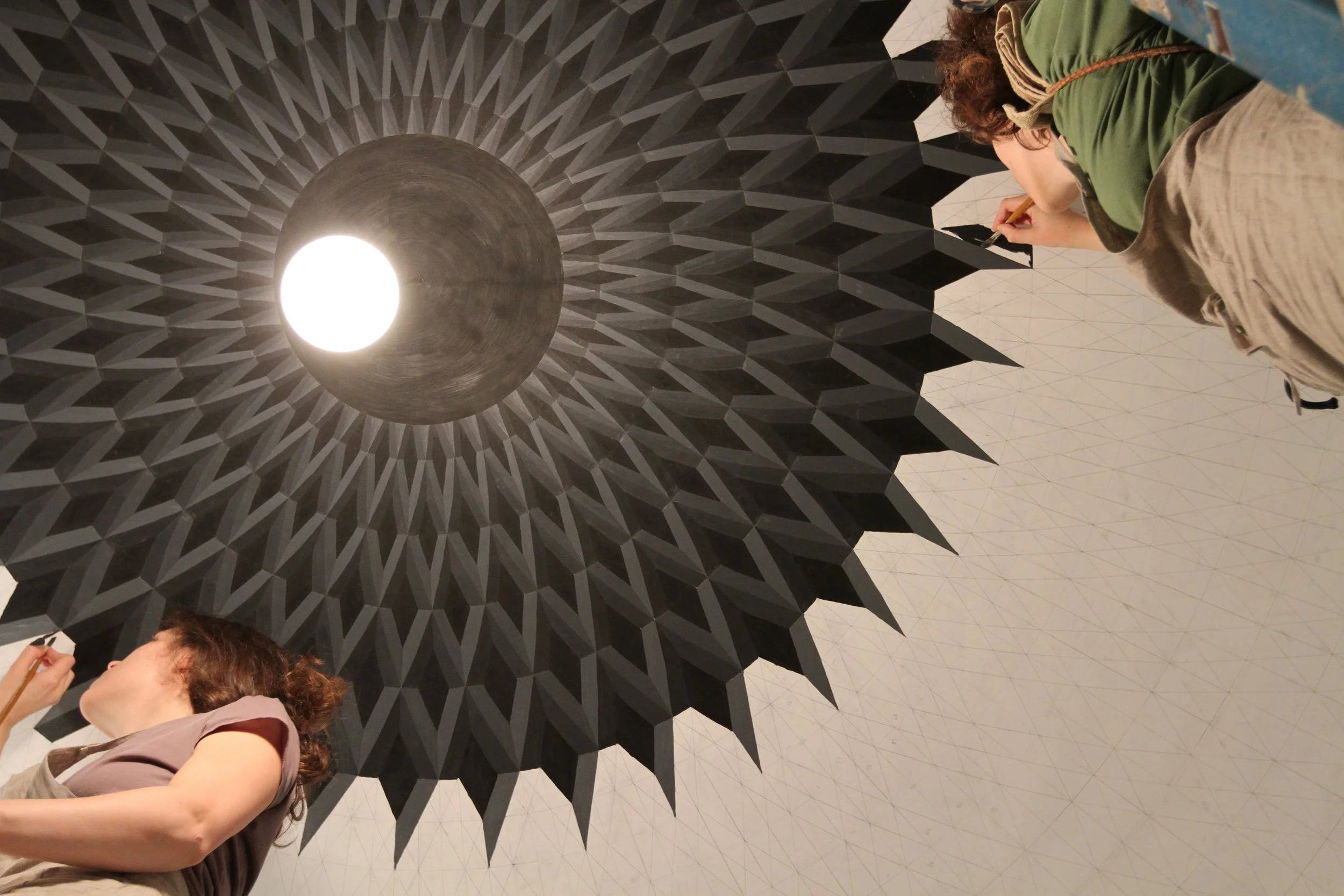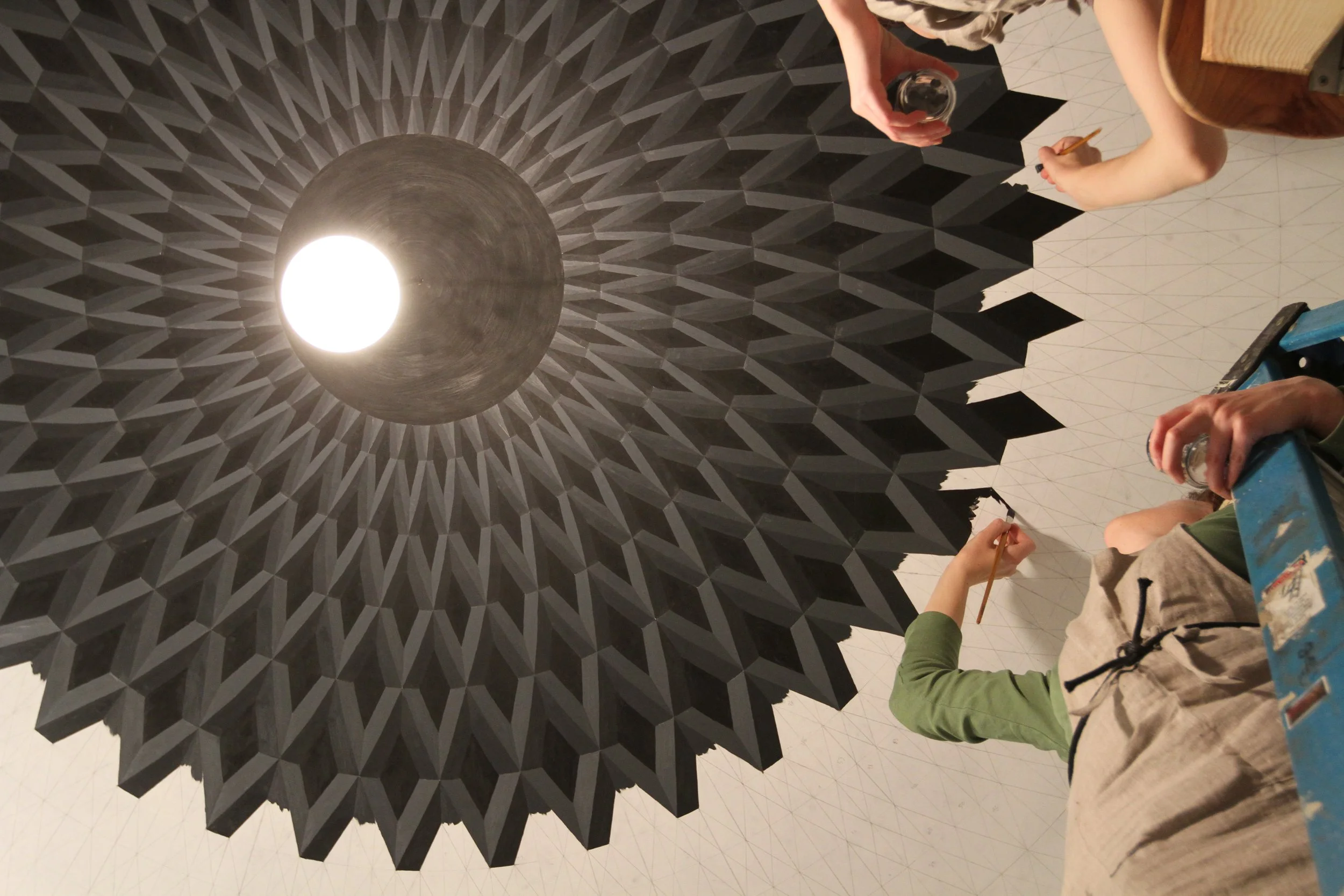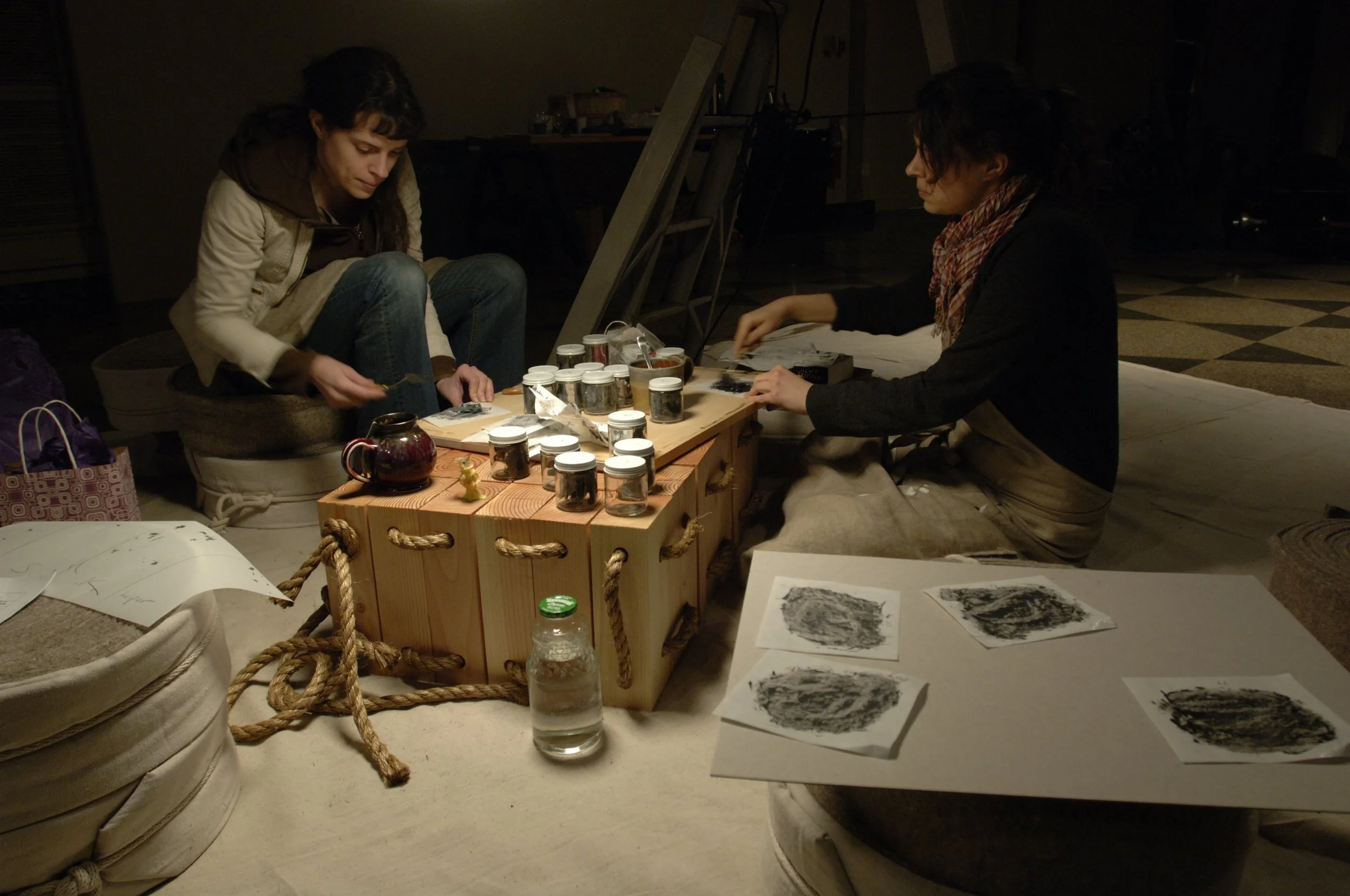In Search of Eden: A Work in Progress
OCTOBER 27 - DECEMBER 23, 2010, 808 GALLERY AT BOSTON UNIVERSITY, BOSTON, MA
Boston University 808 Gallery
TRIIIBE’s series of triptychs, In Search of Eden, originated in 2010 as a site-specific project for Boston University’s 808 Gallery. Responding to BU’s colossal 11,000 square foot gallery— formerly a luxury car dealership—TRIIIBE was immediately drawn to the dichotomy between the space’s commercial function and its atmosphere of religious grandeur, achieved through marble floors, a decorative ceiling and towering columns. TRIIIBE set out to fill the massive gallery with a project with philosophical implications of an equally lofty scale. According to Sara Casilio, “We wanted to get down to the bottom of what is commercialism and what is religion.” So TRIIIBE began where it all begins—so to speak—with the Book of Genesis, ruminating on the figures of Adam and Eve, the serpent, Eden, the Tree of Knowledge of Good and Evil, and of course, the apple.
The collaborative arrived at a plan to create seven triptychs, a historical form of religious art that originated in the middle ages and has been used for centuries in Catholic churches, most typically as altarpieces. Triptychs were devised to visually communicate the word of God to the illiterate masses. Here in In Search of Eden, TRIIIBE conflates Genesis with the word of a different god, namely, Capitalism — daring viewers to consider what their own faults, shortcomings, and wrongdoings would look like in a biblical context.
Each triptych riffs off one of seven apple varieties commonly available in grocery stores: Fuji, Golden Delicious, Granny Smith, Macintosh, Pink Lady, Red Delicious, Royal Gala. Throughout the series apple and Bible metaphors meld together with art historical appropriations to equally humorous and thought-provoking effect. Nothing is as it seems or should be—Fuji apples form a surrealist "Garden of Earthly Delight;" the serpent is not a reptile but a back-ally crook; and the Tree of Knowledge is a data superhighway constructed from computer cords. TRIIIBE asks us to consider: if locust and flood are no longer the price of lust, greed, and vanity, what is?
In Search of Eden is about the power of imagery and the importance of questioning, highlighting the often overlooked intersections between religious and commercial iconography. The triptychs of In Search of Eden explore the similarities between religious and commercial imagery, as modes of communication that proffer unobtainable ideals of perfection — be it a life free of sin or cellulite.
— Fitchburg Art Museum: Former Curator Mary Tinti and Former Koch Curatorial Fellow Emily Mazzola















